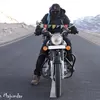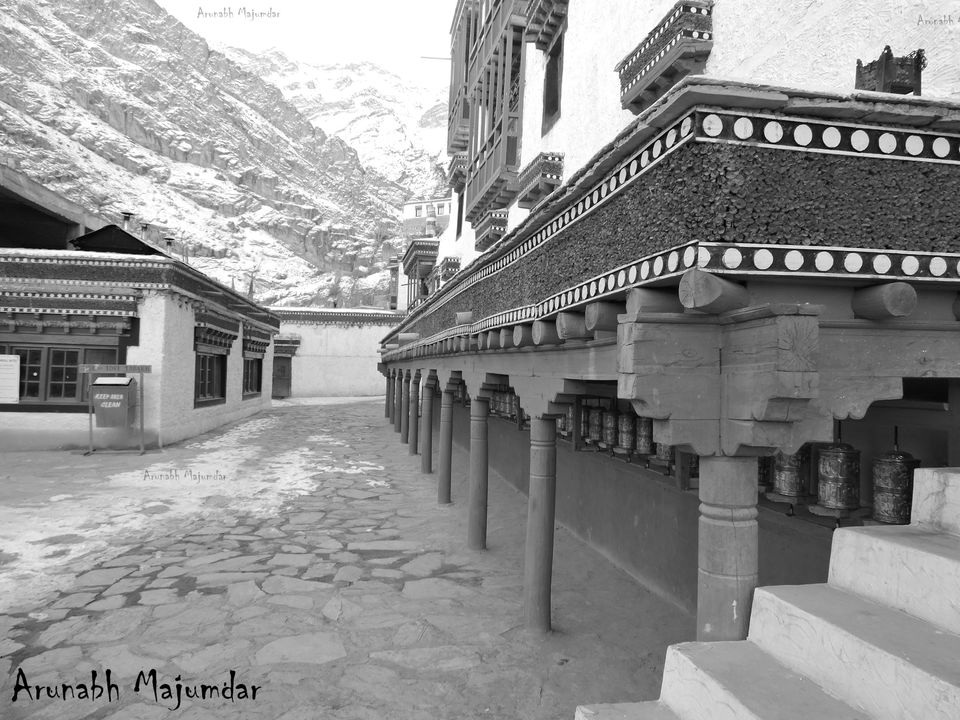
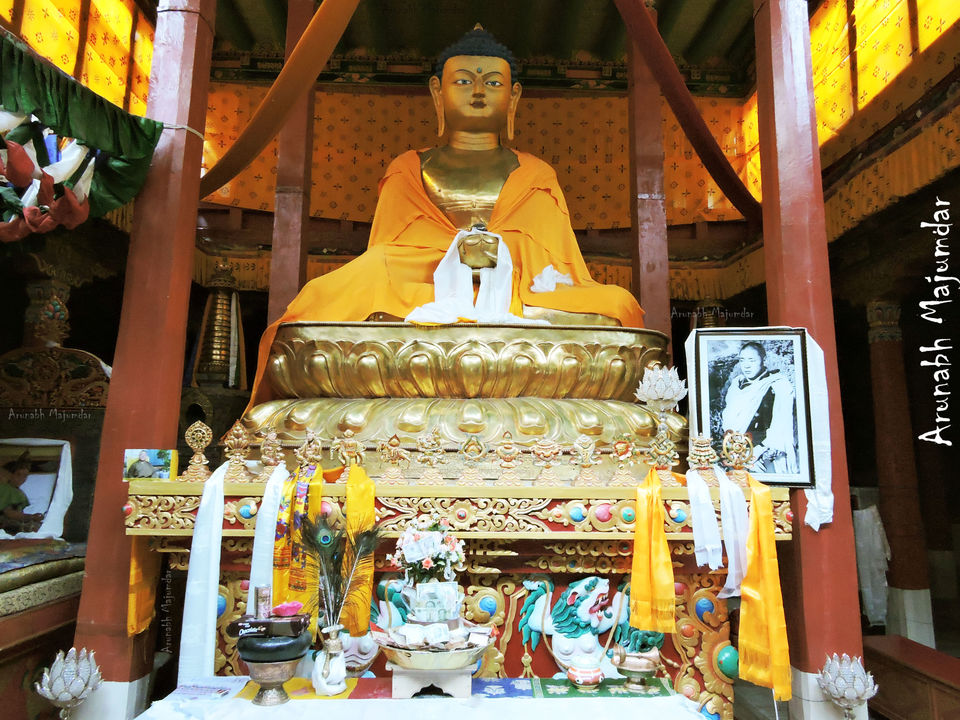
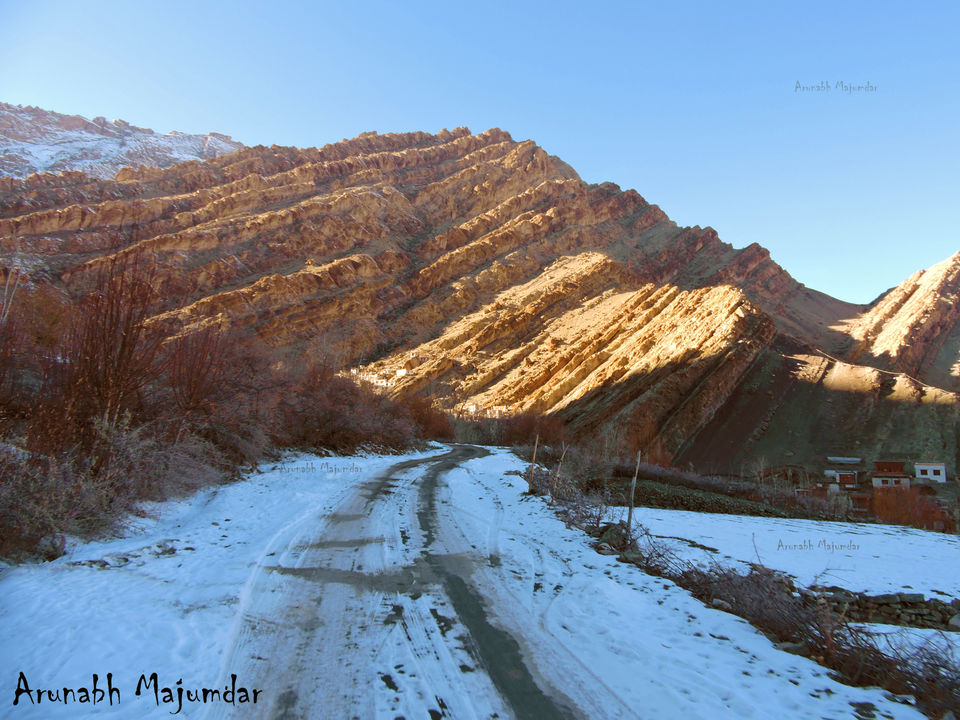
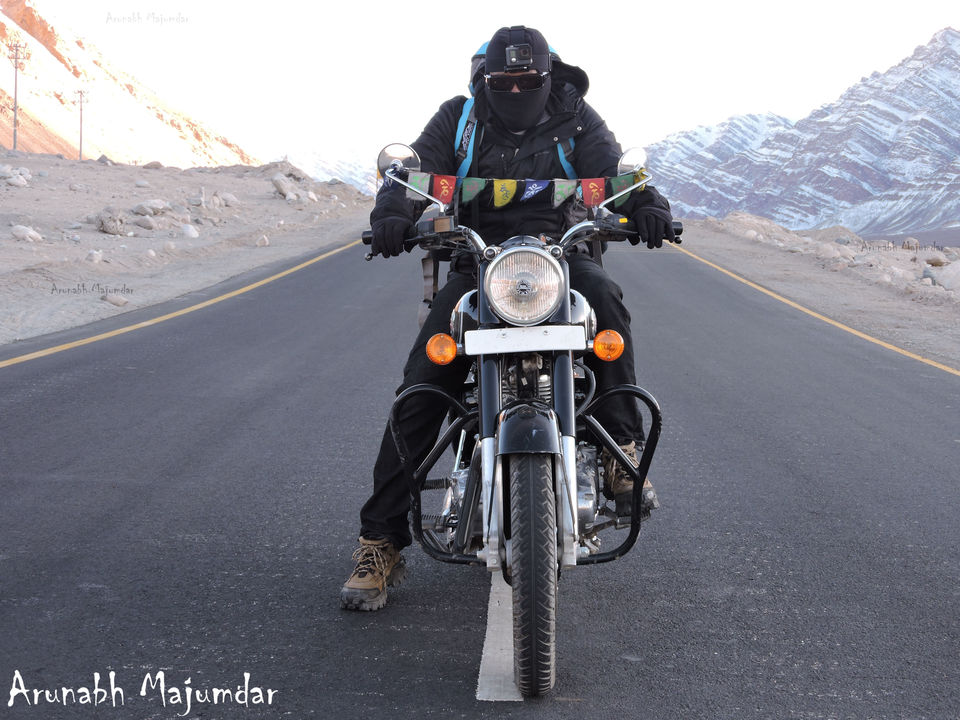



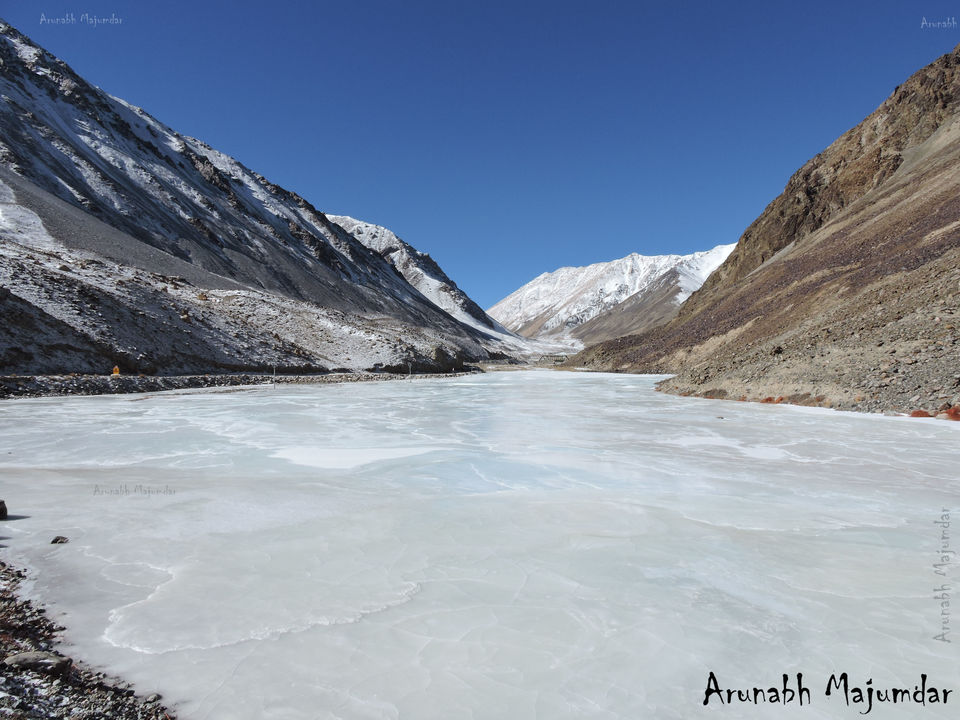
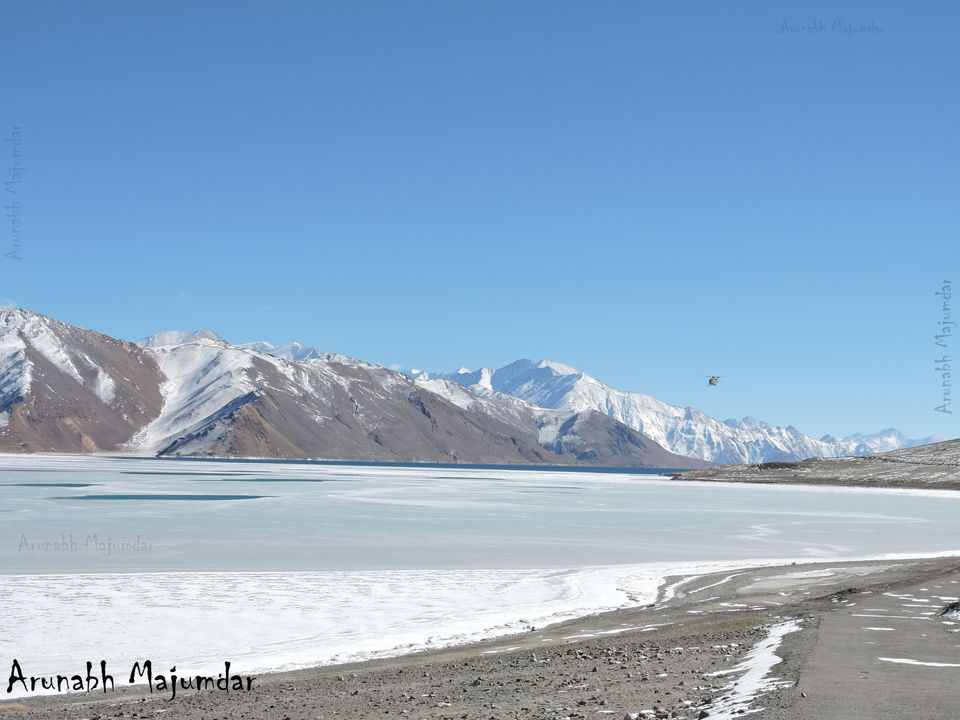
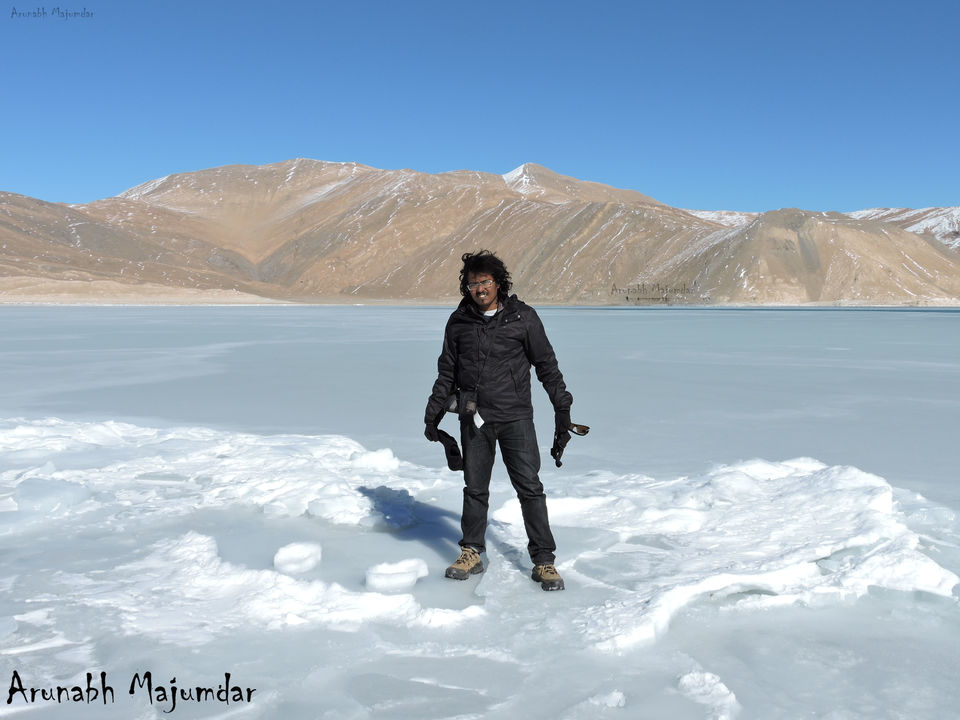
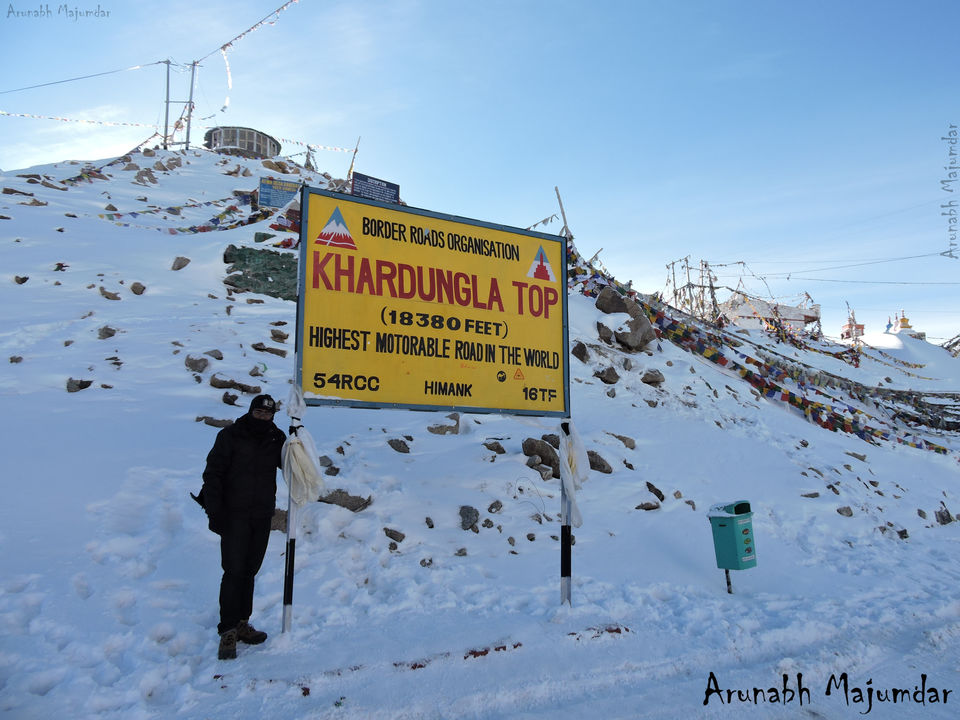
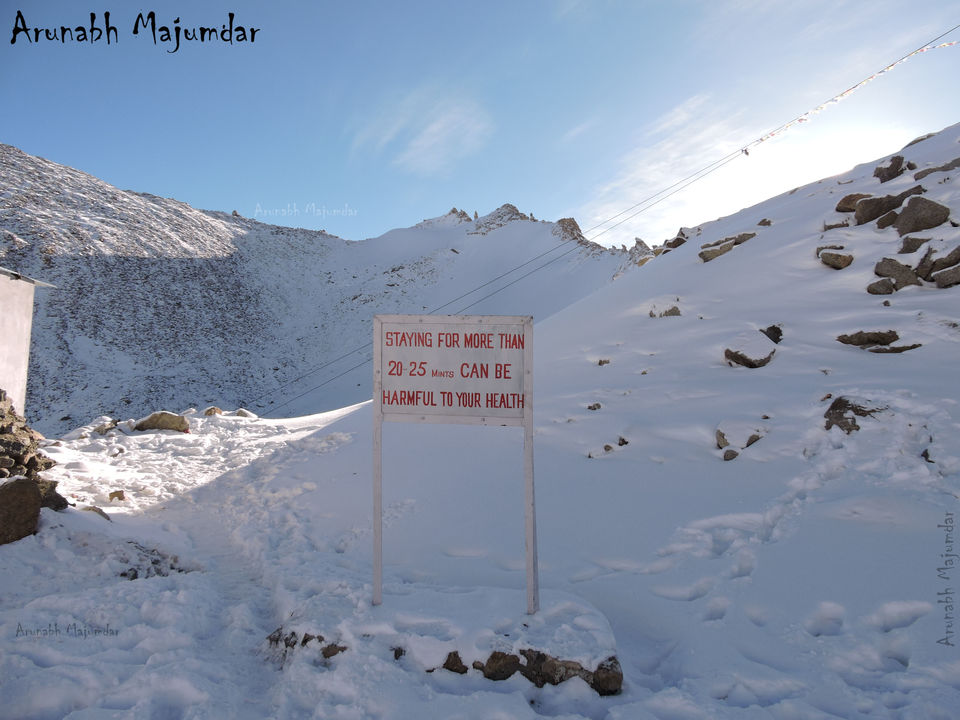
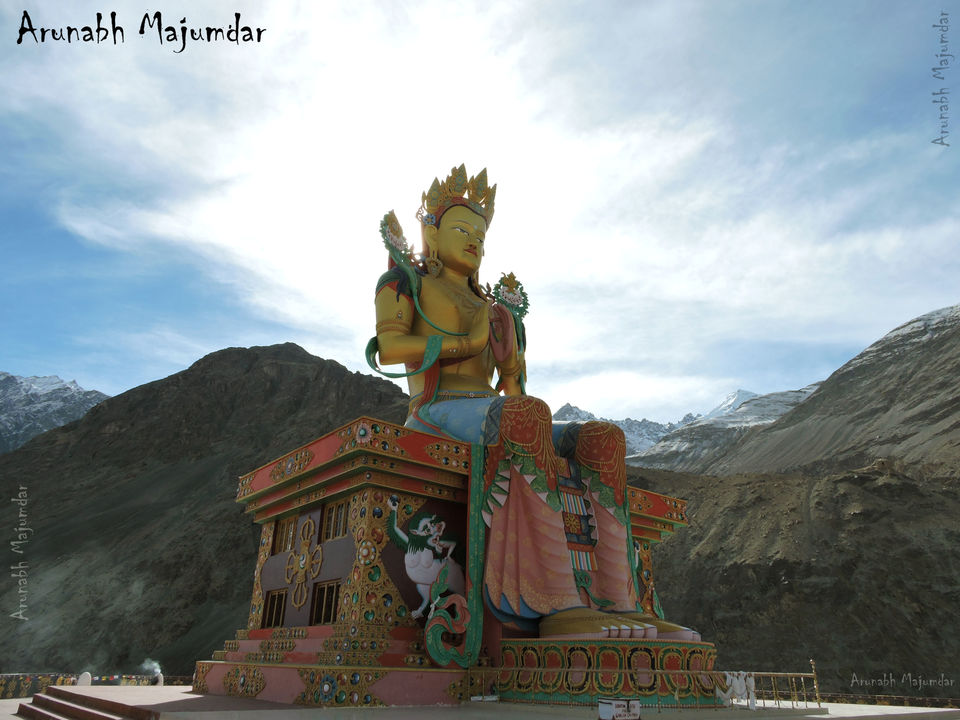
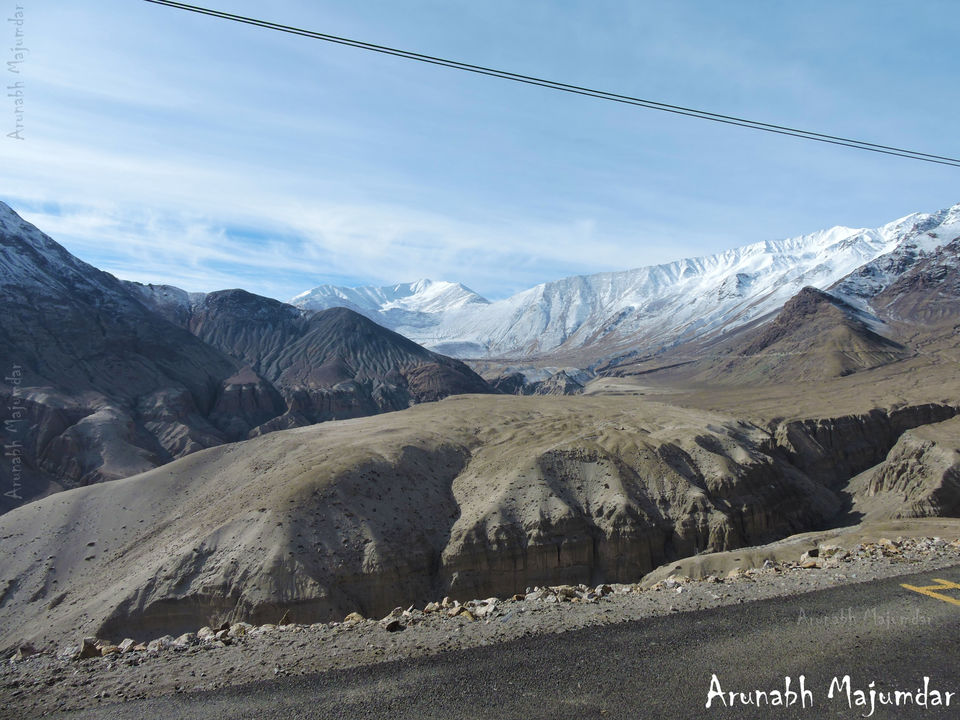
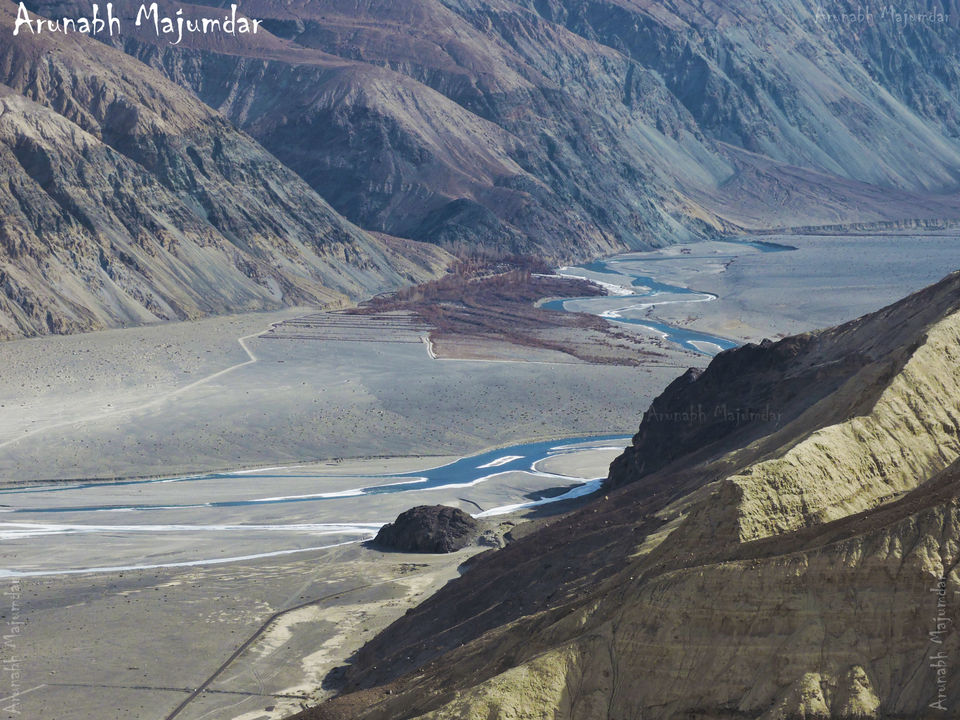
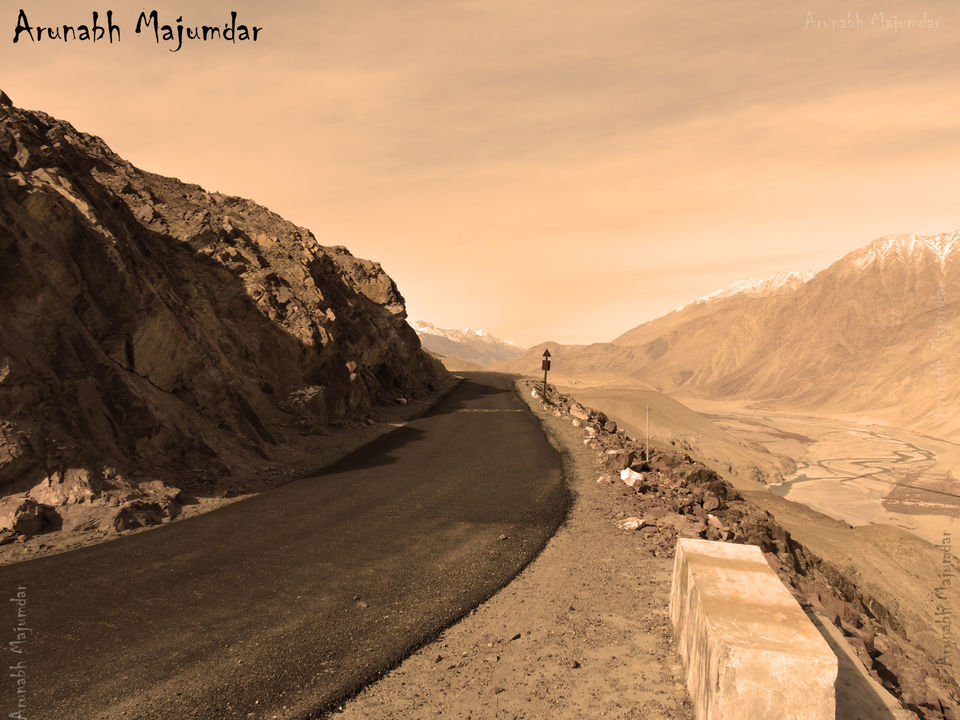
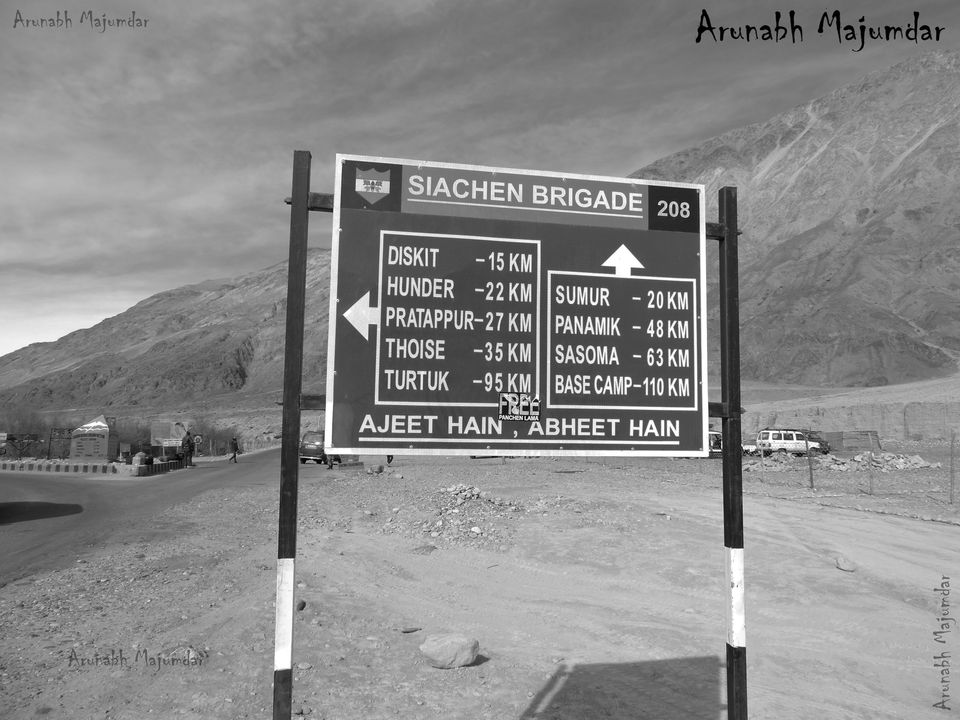
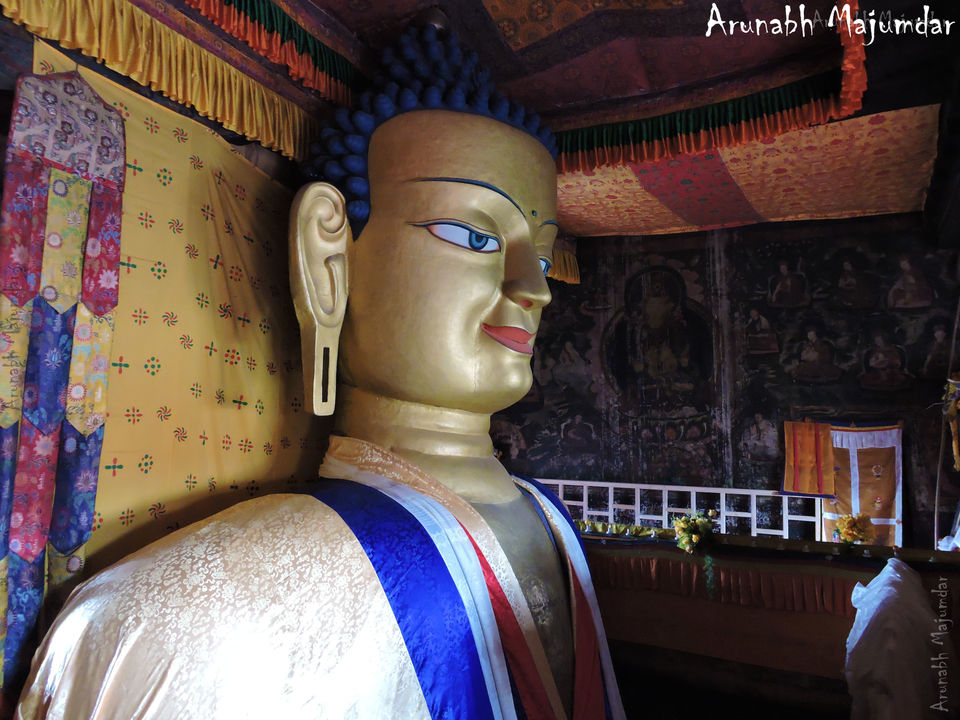
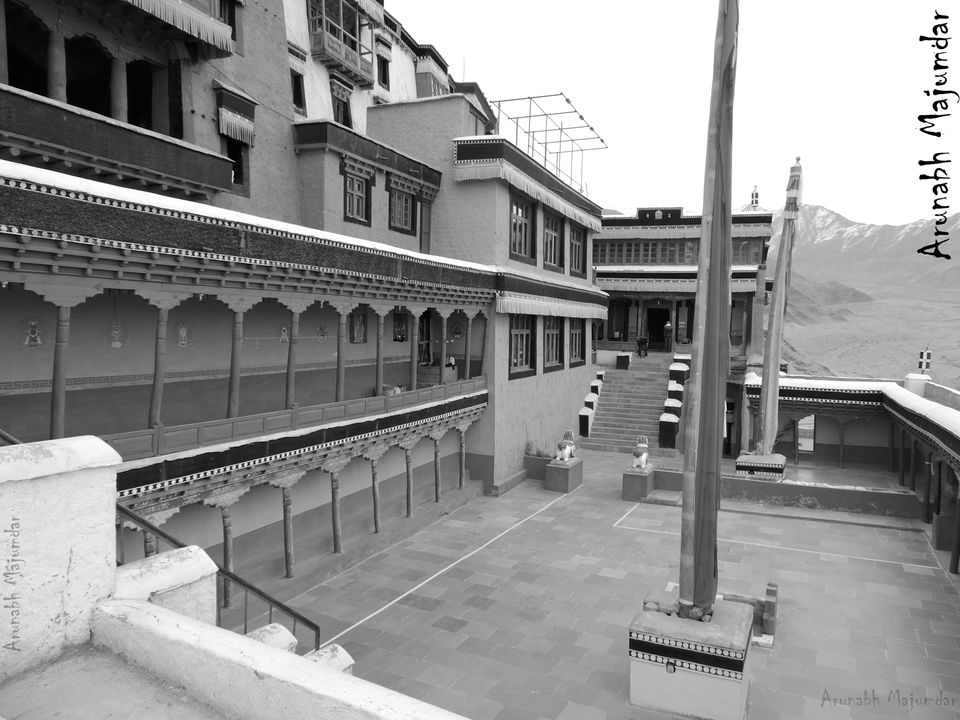
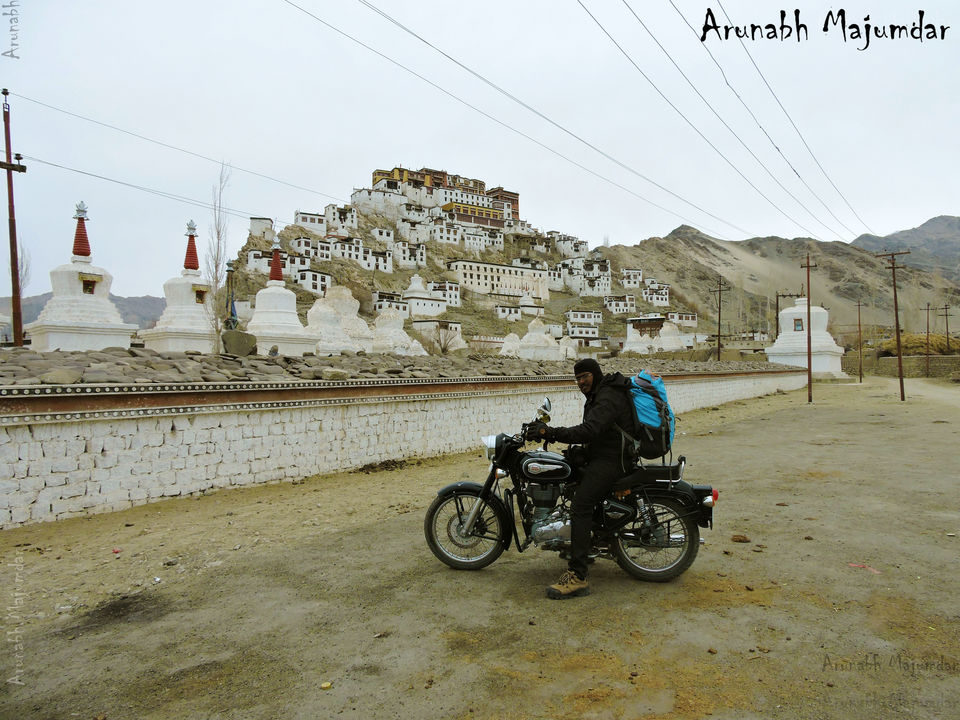
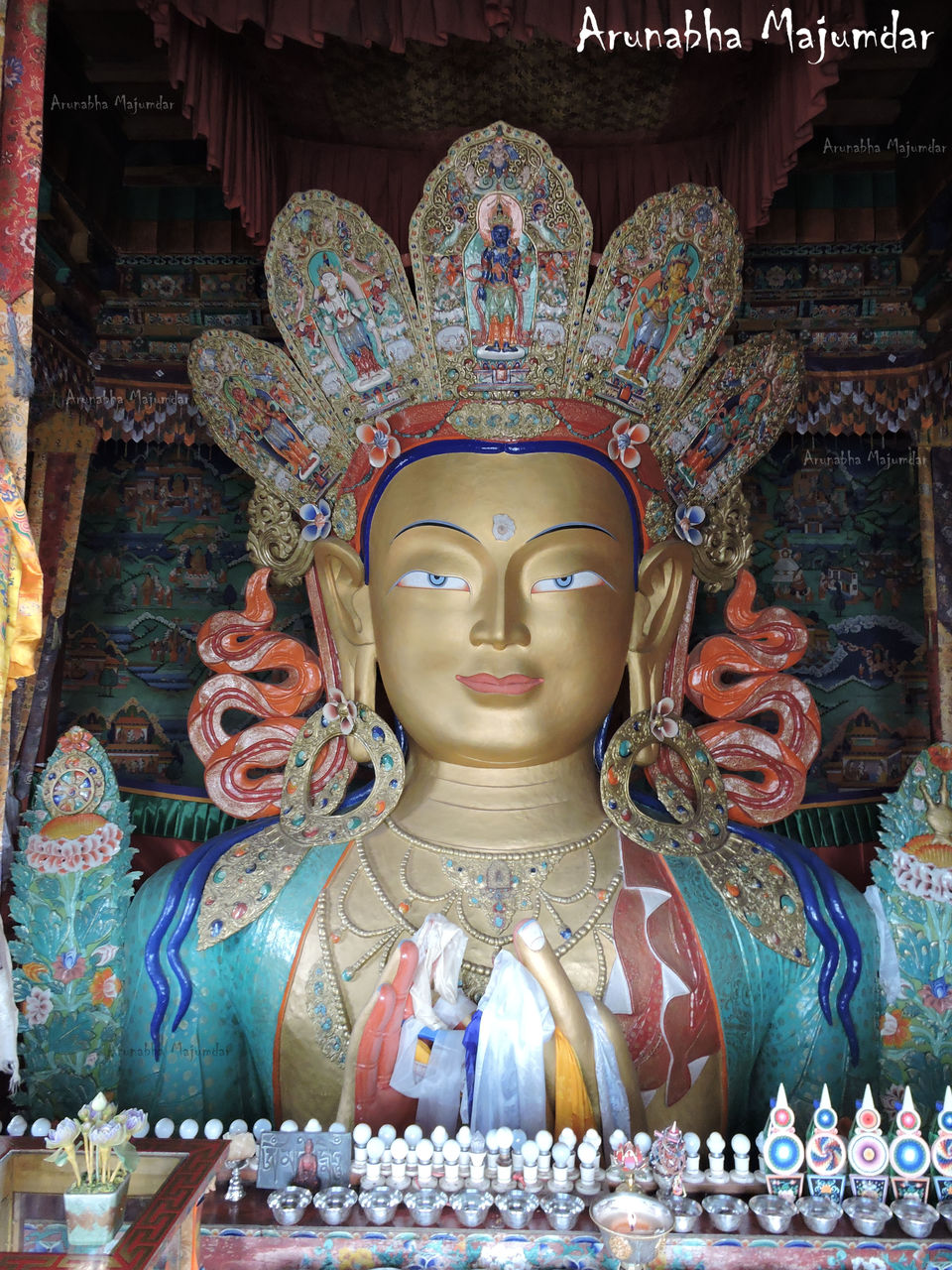
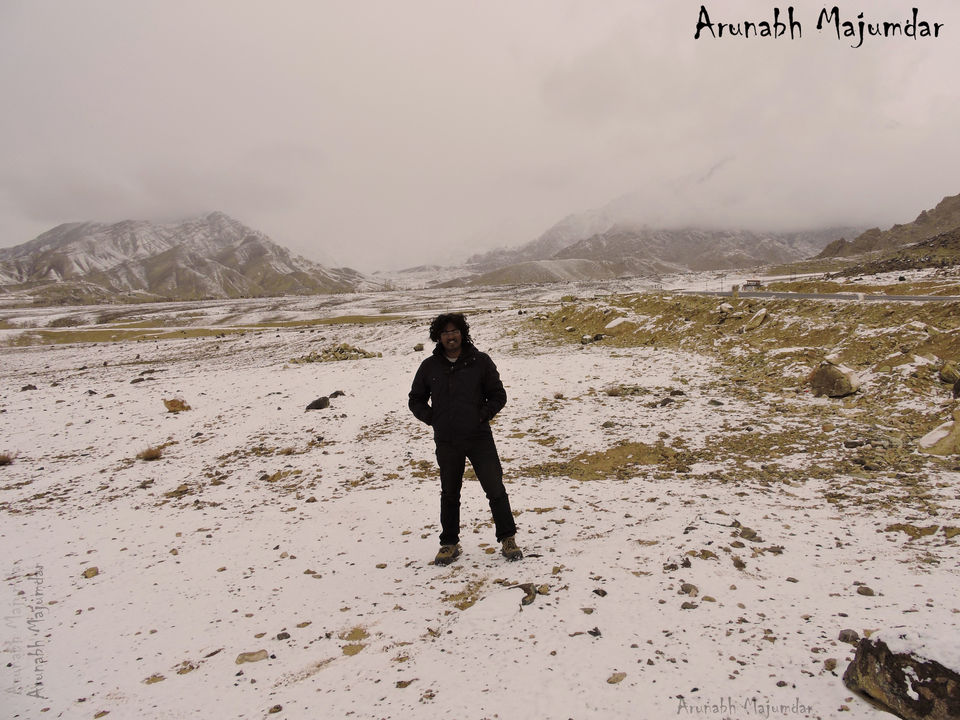
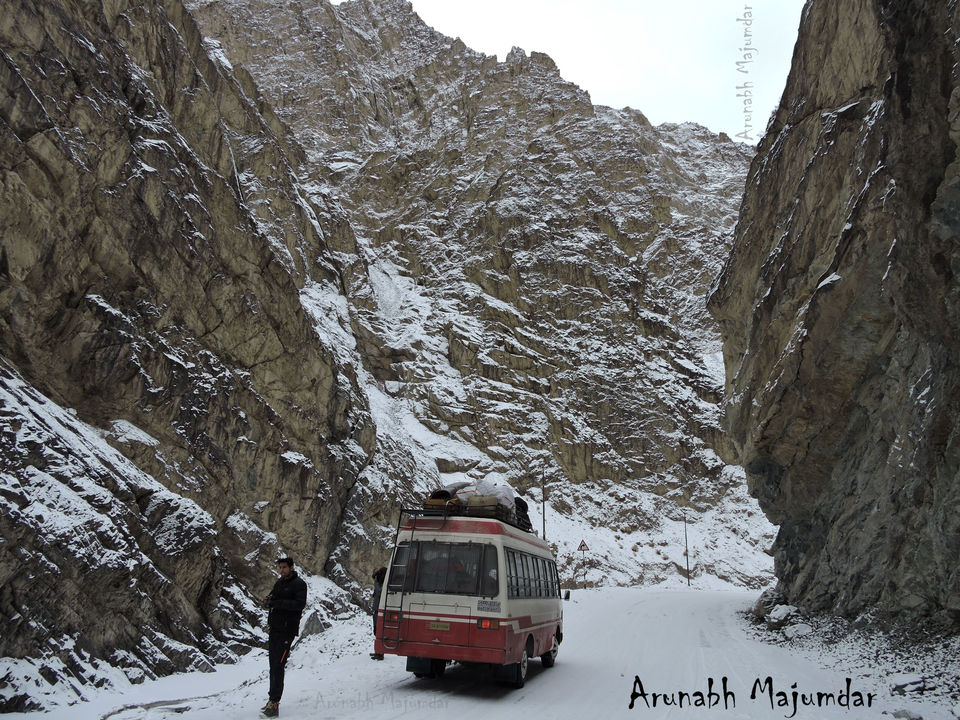
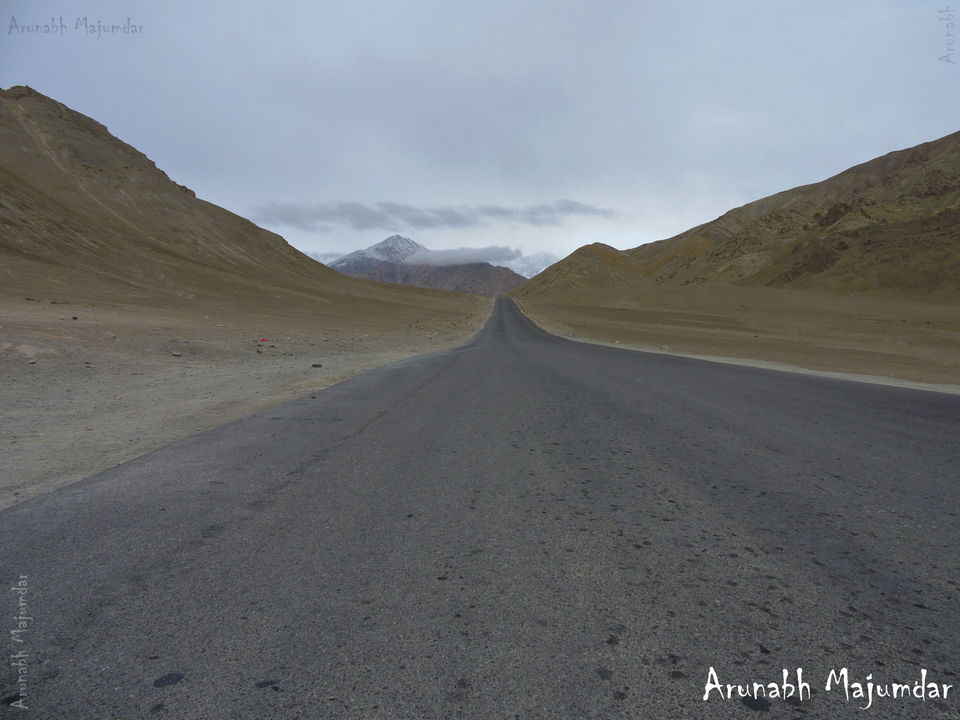
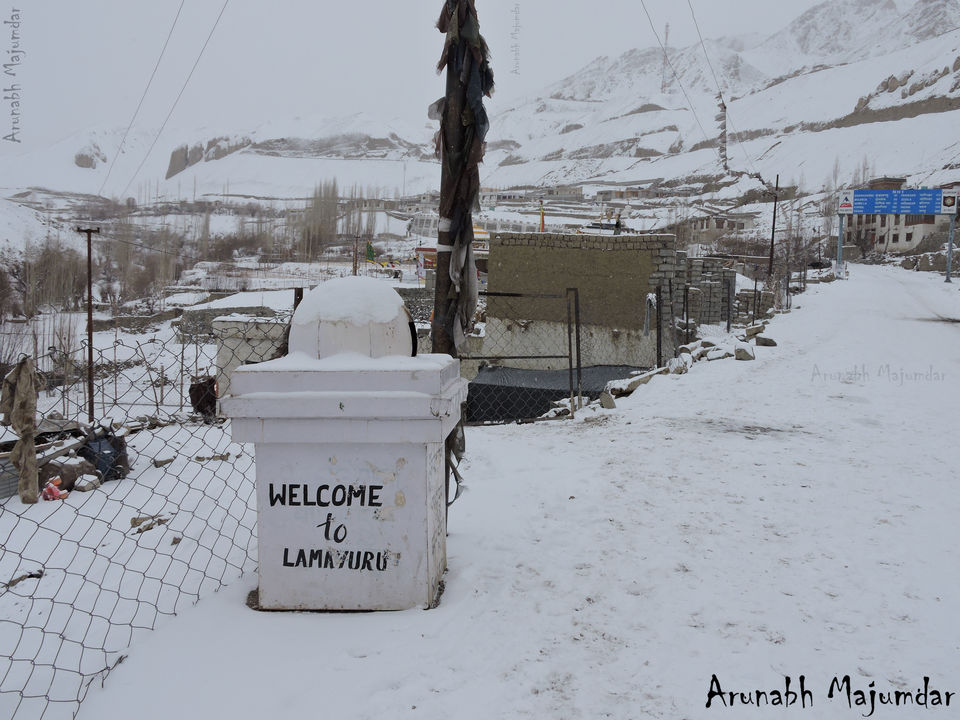
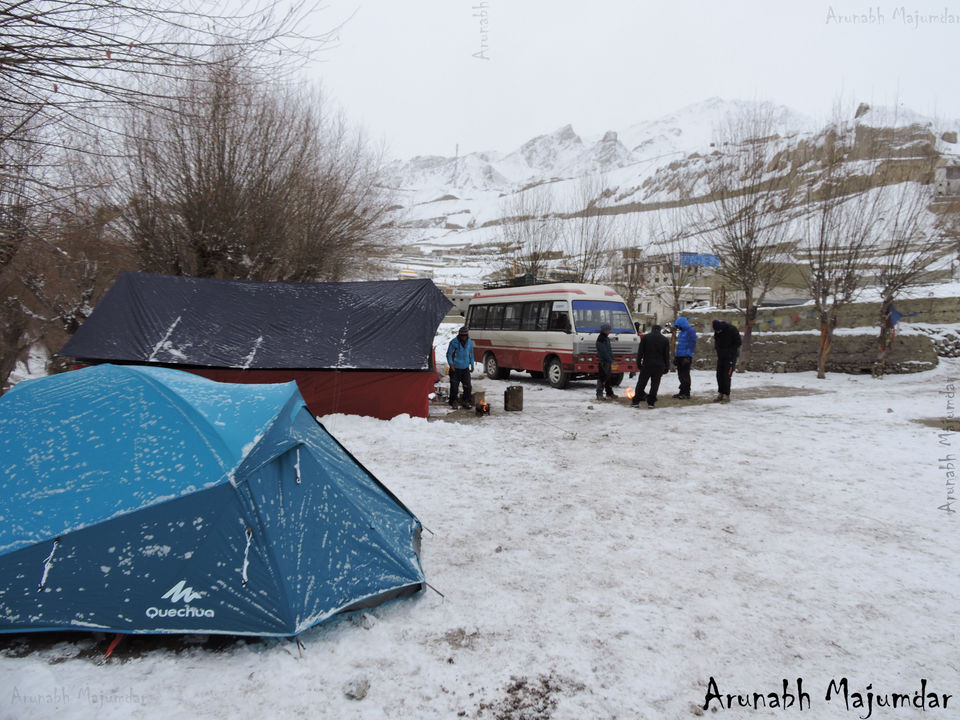
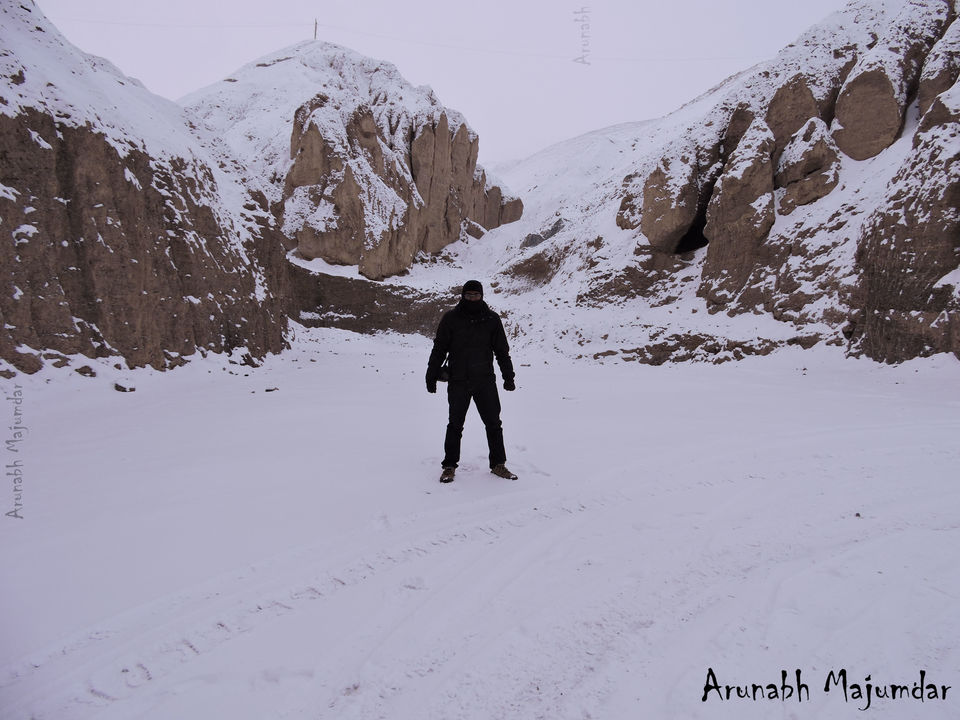
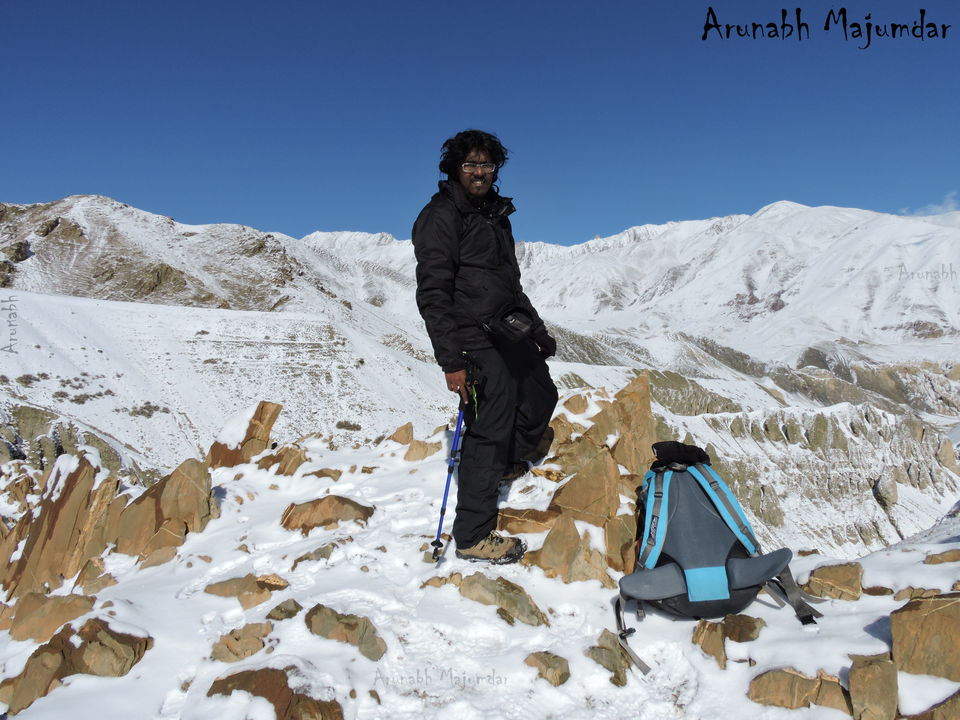

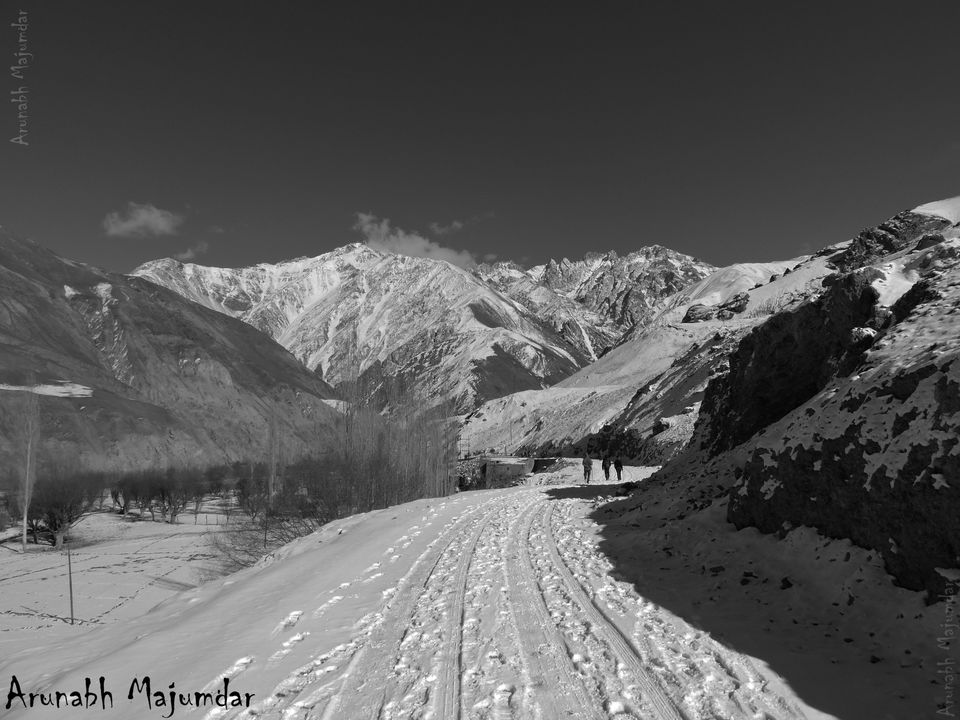
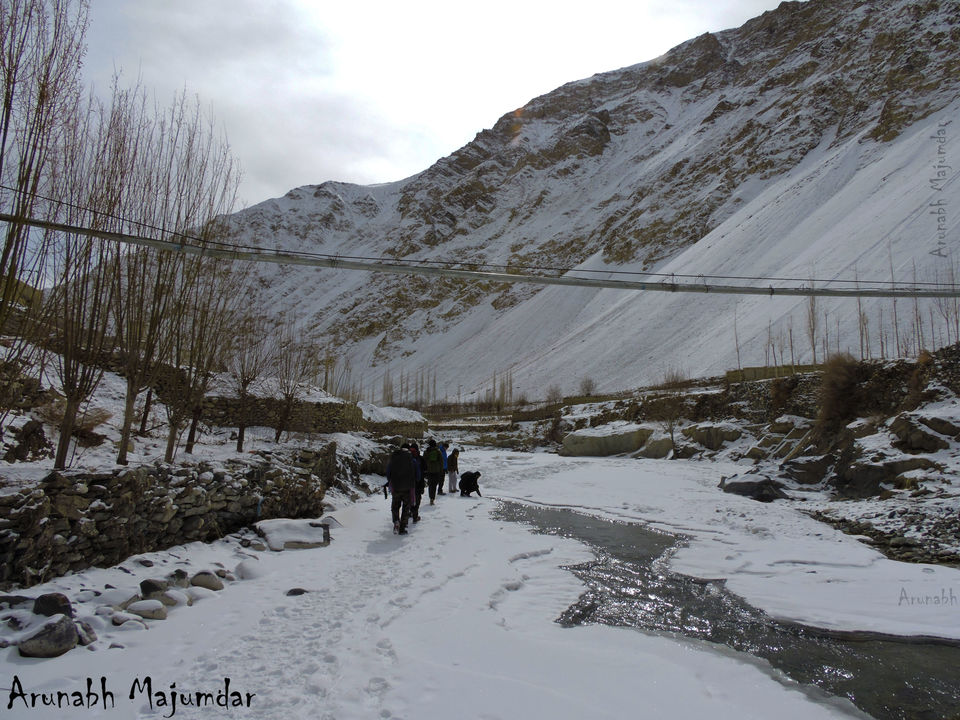
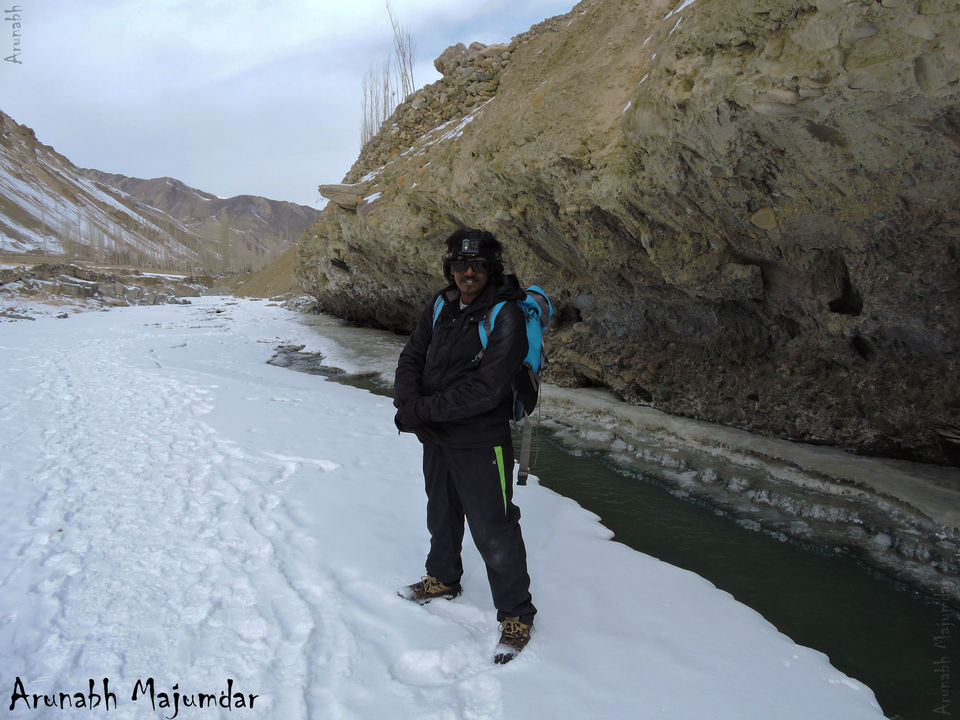
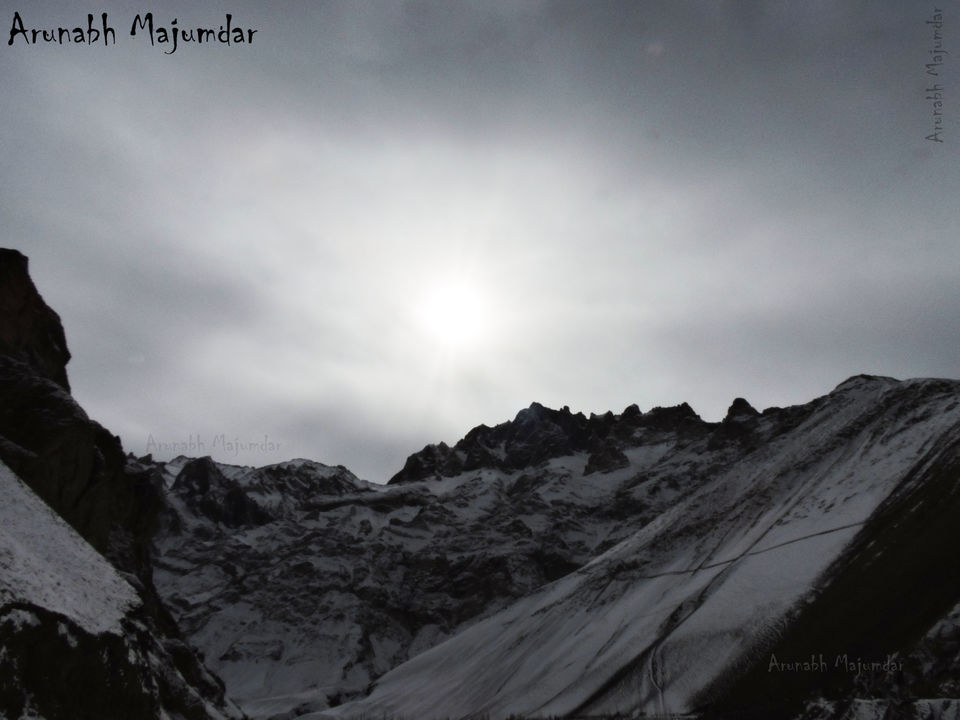
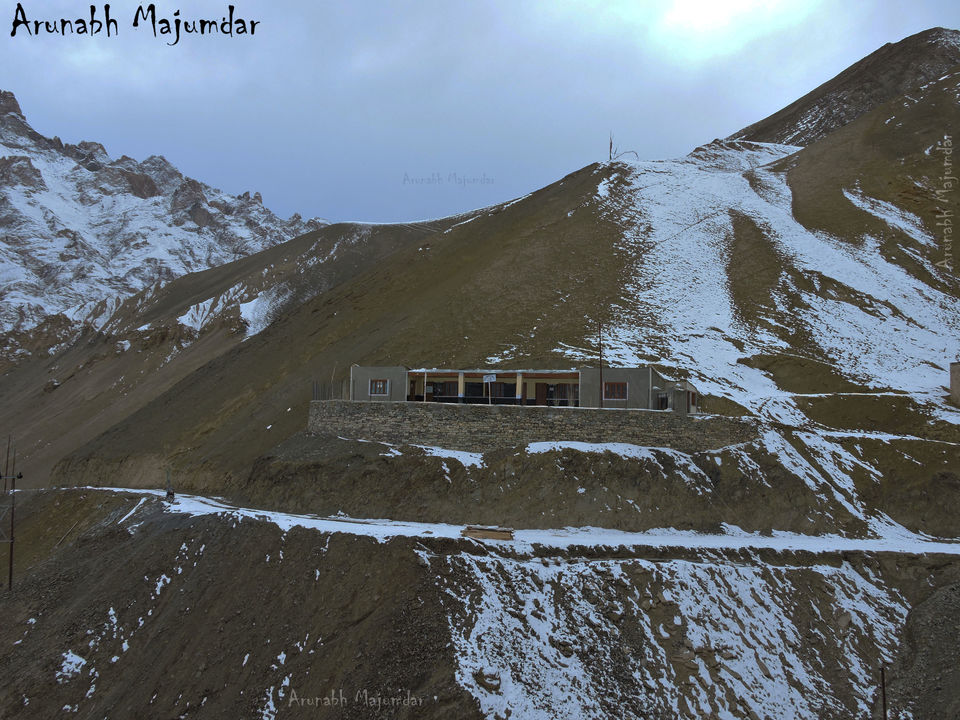
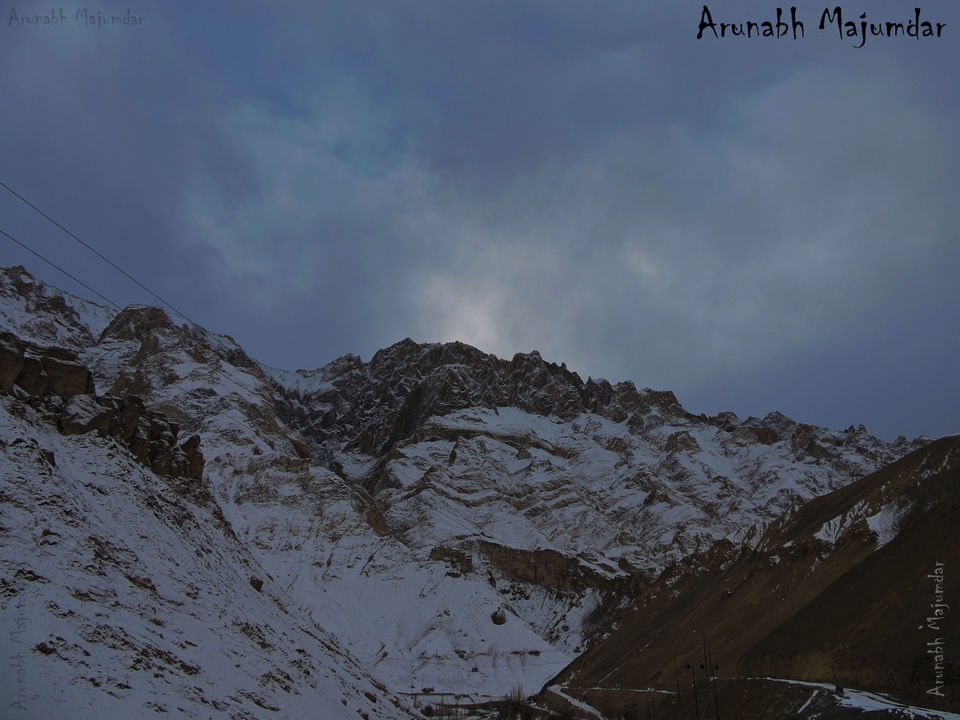
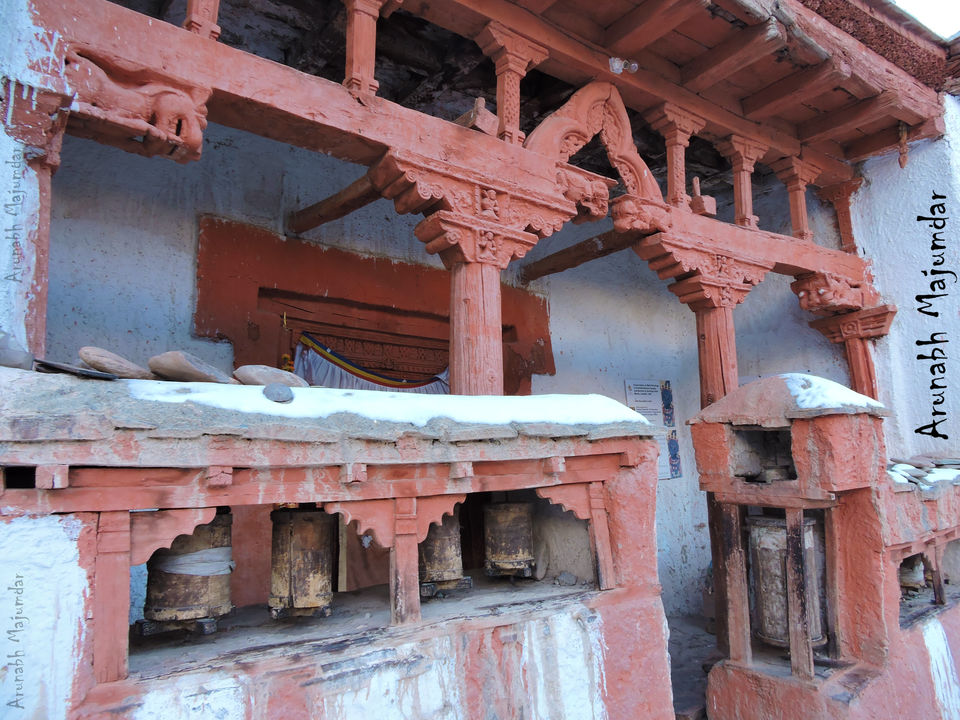
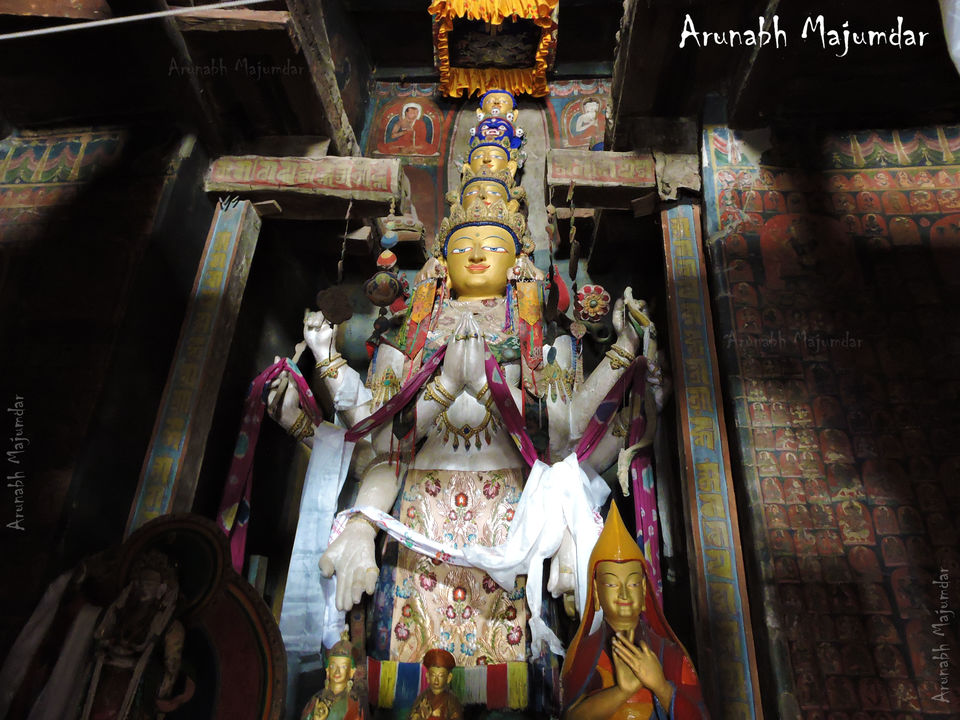
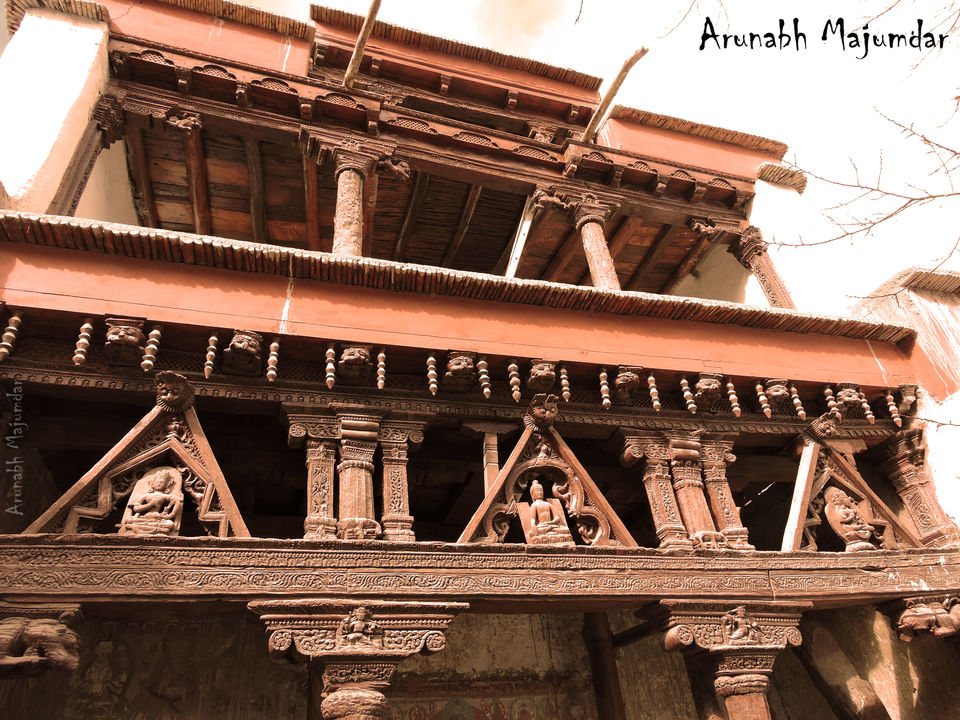
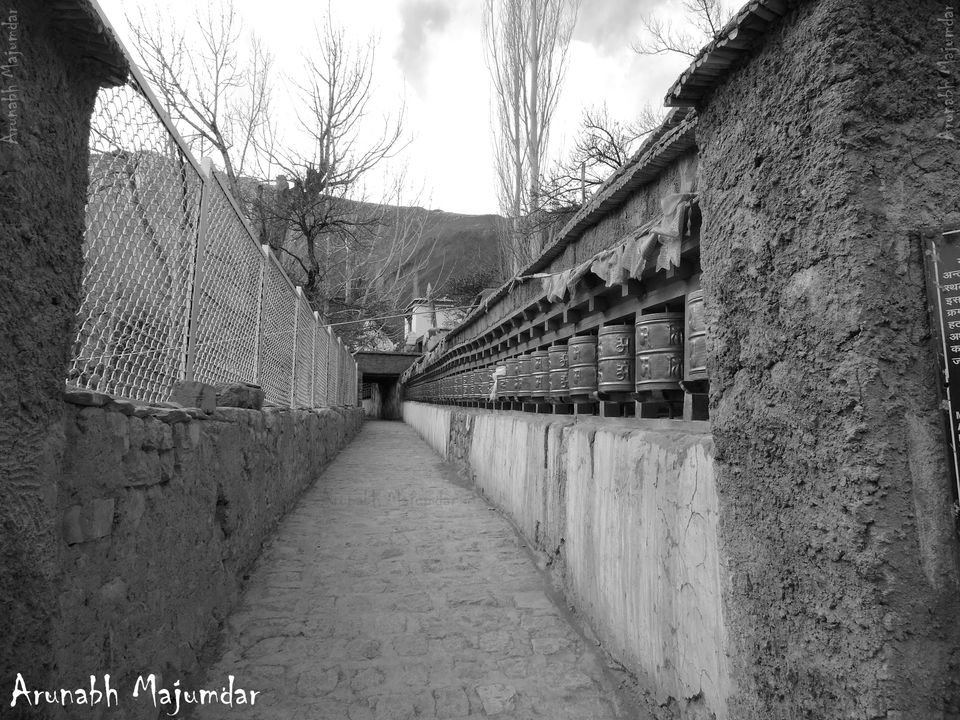
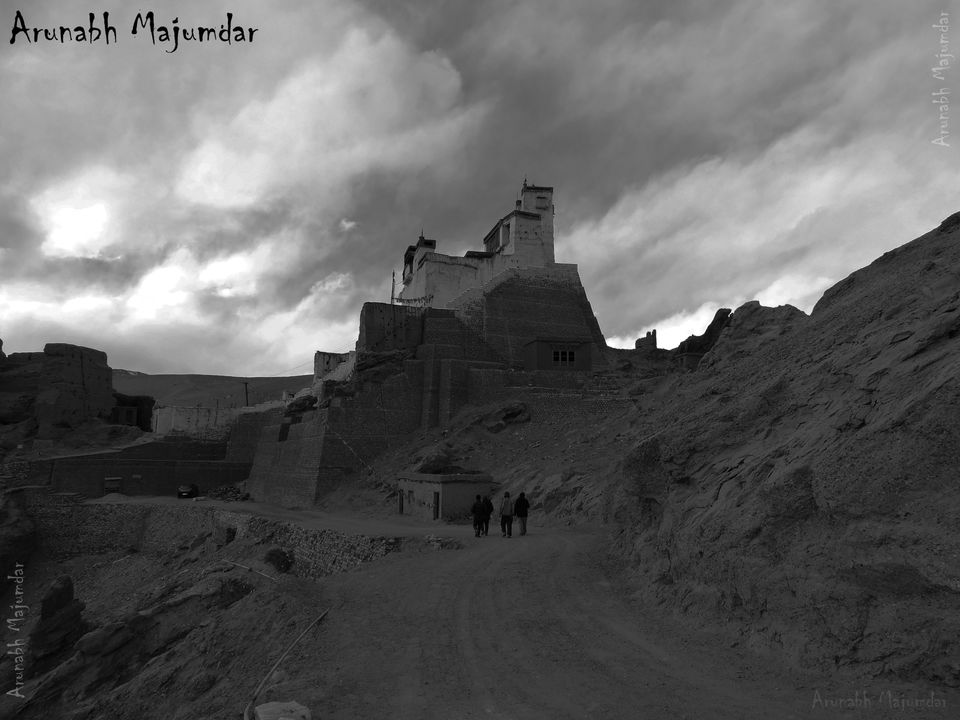
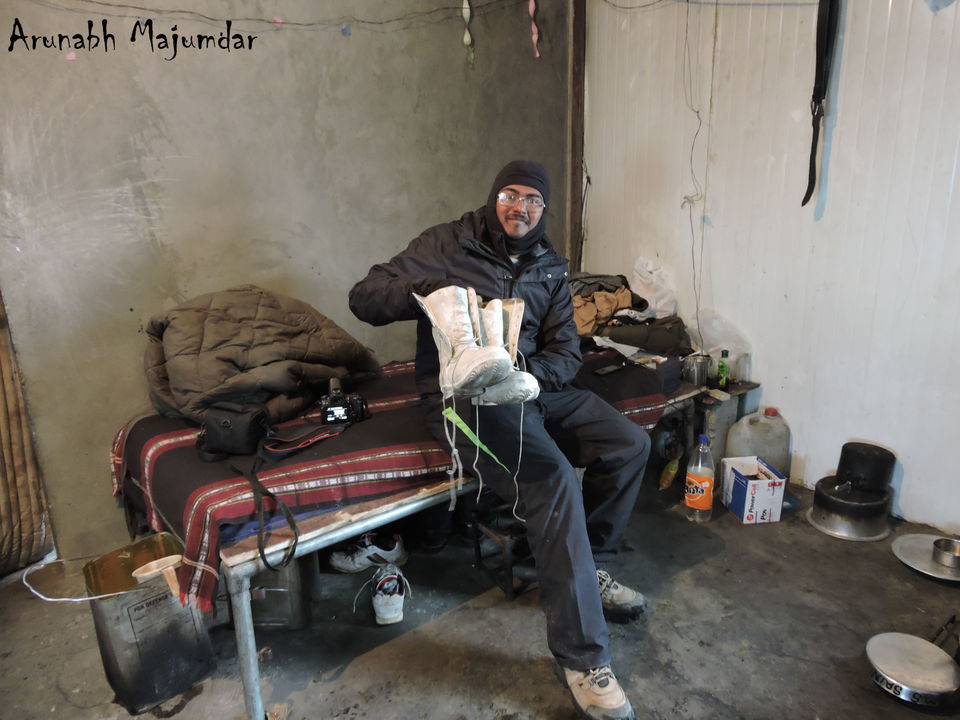
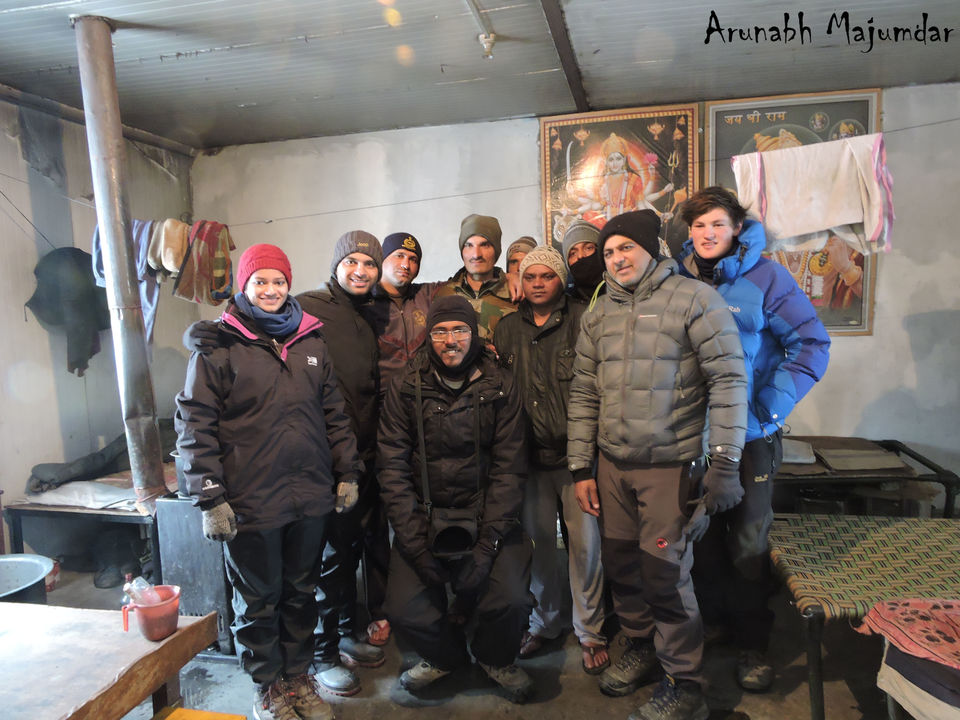
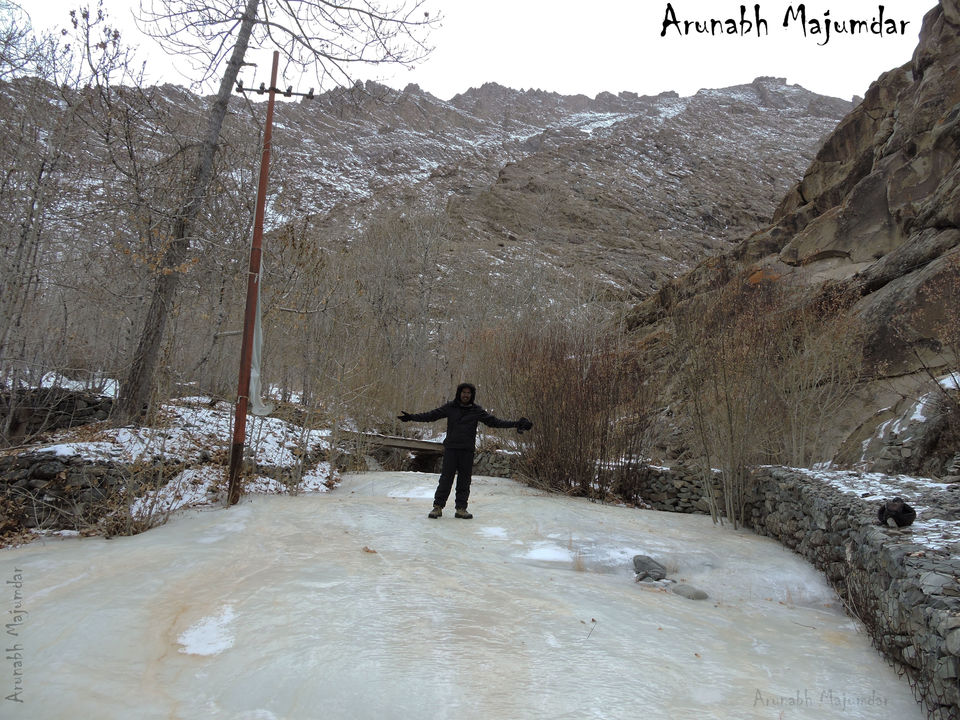
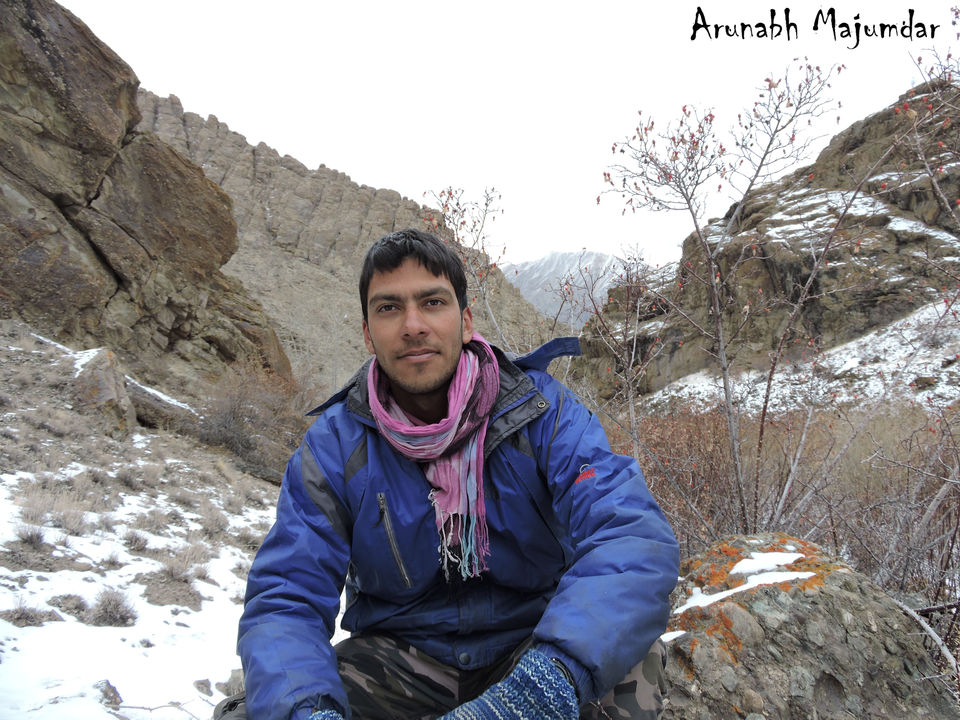
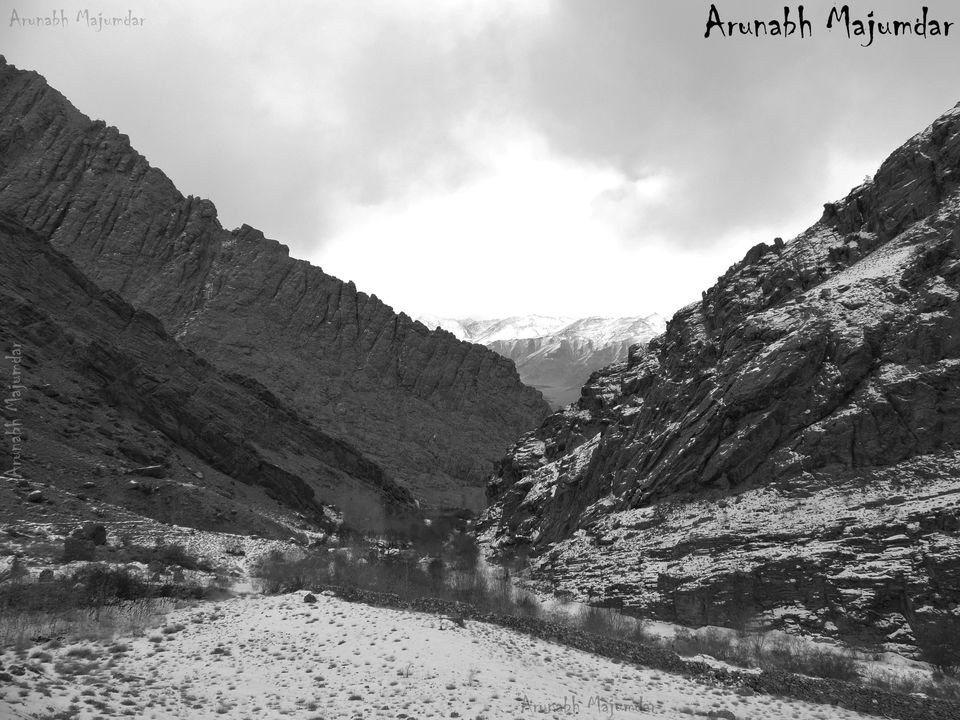
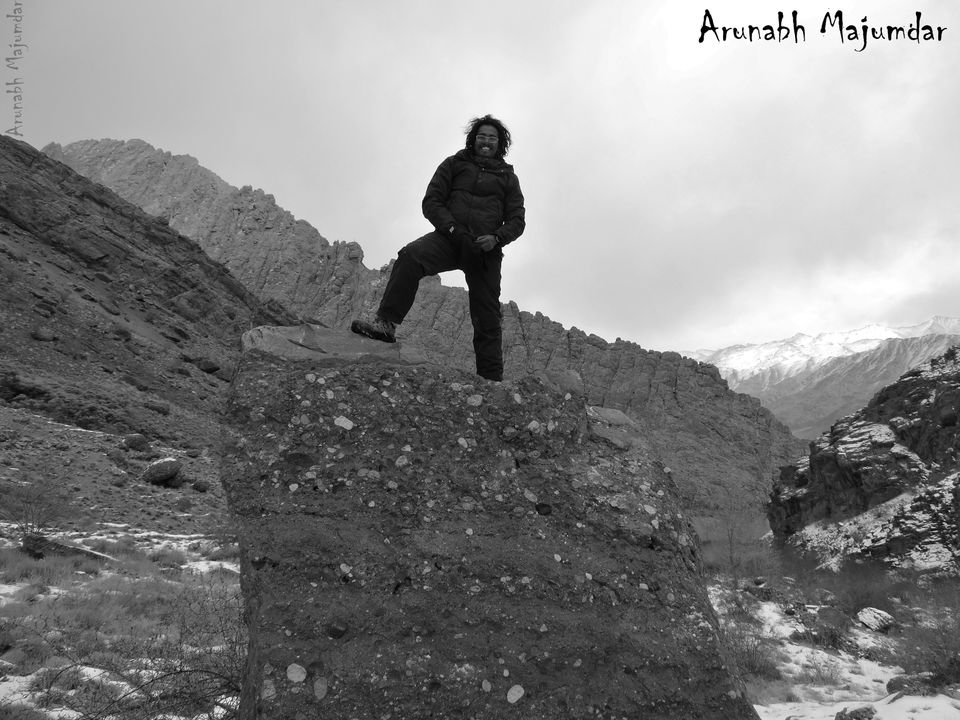
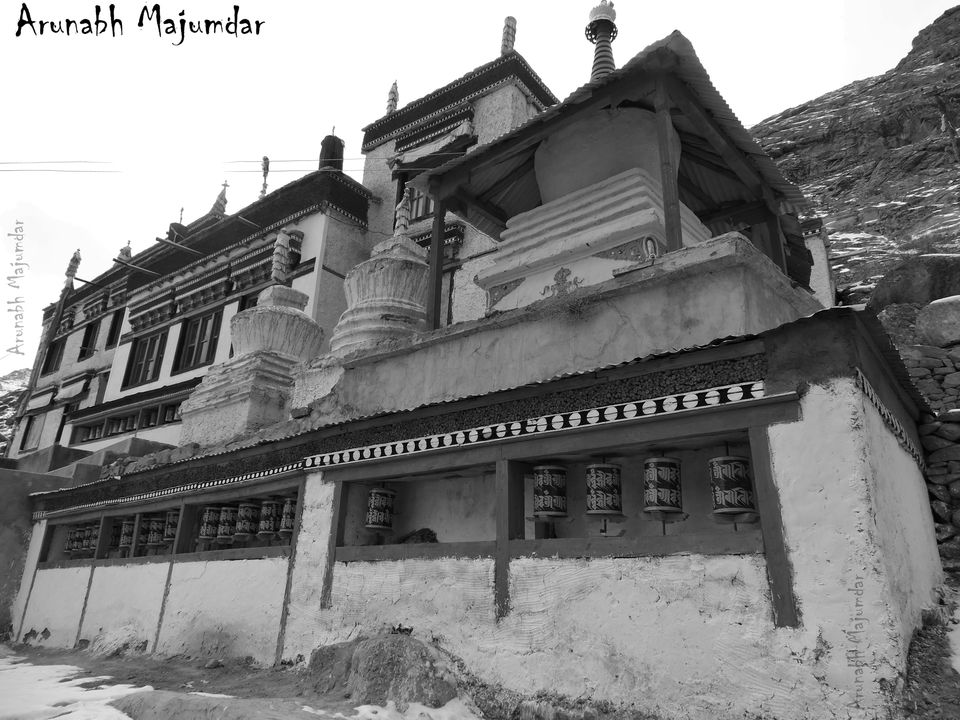
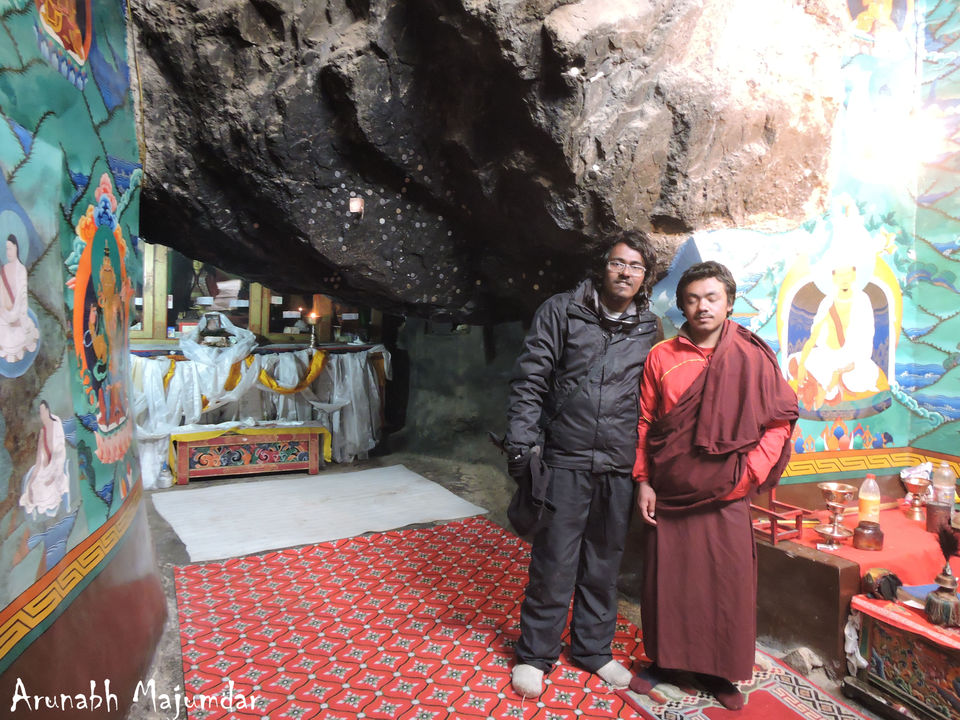
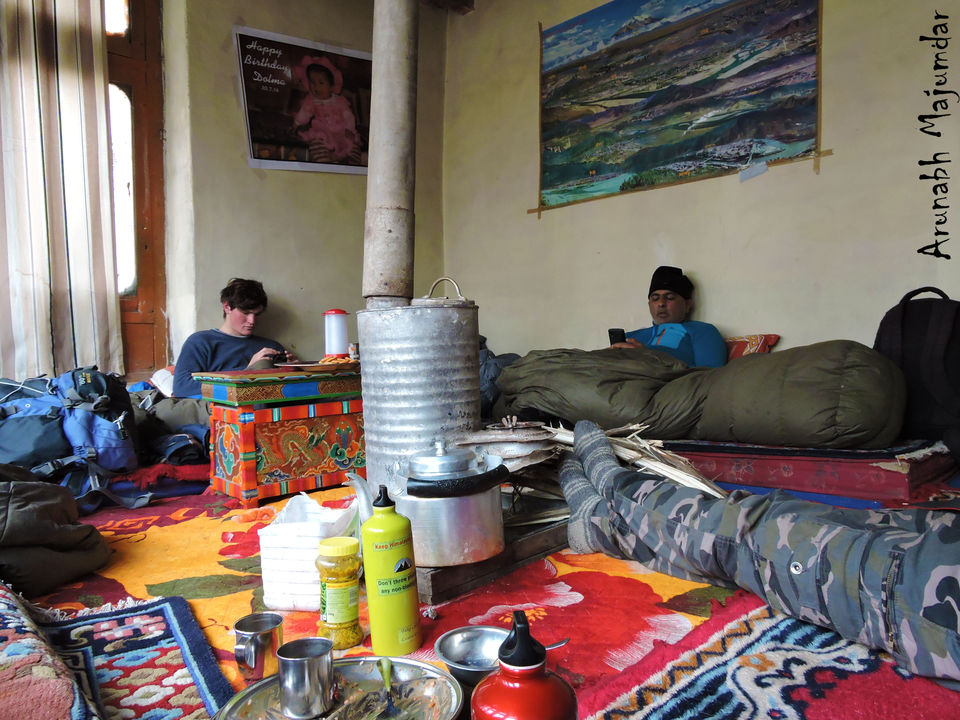
I should have seen the signs –the trip was going to be nothing like the one offered or anticipated. I had signed up for the Chadar Frozen river trek in Ladakh in early December with TrektheHimalayas. Fuelled by copious amounts of googling; anticipation had built up to dangerous levels by mid-January. My trek was the second of the season on 21st January (The first one beginning on 16th). I had planned to go to Leh Earlier (By about 4 days). I had been to Leh-Ladakh before but this would be my first trip in the winter. And I wanted to catch the frozen Pangong and Nubra dunes again (This time in their winter prime!). The Chadar trek is a frozen river trek in Zanskar starting from Nimmo to Padum in the Zanskar Region. Considering the winter wear advised looked enough to go to Antarctica, I am glad I heeded the advice. Having done the Leh and the Spiti circuit before I grossly underestimated the statement “Dude, the cold’s gonna give it you buddy!” And then Bam! The Chadar trek gets Cancelled 3 hours before my 10 pm flight to Delhi on 17th Jan owing to the river from Shun getting blocked near Marshun due to loose soil leading to a flood like situation near Chadar. The local administration promptly called off the Chadar trek and all trekkers were ordered off the area. I recall contemplating on what to do next when my beeped again with the alternate Lamayuru- Zanskar Trek. I decided to go for it anyway – Chadar or no Chadar! At least I get to put the newly acquired winter wear to some use!
The flight to Leh was delayed owing to the winter fog in Delhi and dressed just in a windproof Jacket, it wasn’t fun getting exposed to -8 degrees outside the warmth of the plane in Kushak Bakula Airport in Leh! No sir! (Random tip: Wearing your thermal inners at Delhi before boarding the flight to Leh (In winter) is a great idea, (Something which I found hilarious at the time and repented it minutes into Leh!)).
I was 4 days early in Leh and wanted to make the most of it. TrektheHimalayas had very graciously agreed to arrange for accommodation on the extra days I was at Leh at the Jamspal Guest house. (Tip: Winter in Ladakh is Severe and most hotels are closed. Tourists are few and are usually here on one trek or the other. Jamspal Guest house (+91 9622999620 – Mr. Shring) is one of the few places open all year (Decent place; There is a common toilet and the gas heaters aren’t great; food is brilliant). The tariff is 1300 per night in the winter (and includes food) and isn’t a bad deal at all.). I shifted to Hotel Palace View on the day before my trek started.
Pangong and Nubra required an inner line permit, hence I had timed it on the next day. I decided to do the monasteries on Day 0. On a Bullet! (I was on the road about 2 hours after I landed in Leh; and that is never a good idea folks: Giving yourself a few hours to acclimatize is crucial) (Life tip folks: Riding in Ladakh in winter is an entirely different ball game than in June! No amount of layered clothing is going to prepare you enough for those icy winds at 40kmph). Consider I looked ready to climb the Everest dressed as I was in 2 pairs of thermal inners, a full sleeve t shirt, a fleece T shirt, a fleece jacket, A down Jacket and the Wind jacket on top of it all, 2 pairs of gloves, A Balaclava and UV sunglasses I still had to limit my speed to 30 kmph with frequent stops to stop my fingers from going numb.
The bullet as usual didn’t disappoint. I rented the same from a guy in Leh (Dorjee: +91 9906971501; +91 9419889795). Dorjee rents out bullets for 900 bucks a day. His dad Mutup (+91 9622975268) was the one who drove me to Pangong and Nubra the following days. More on these later.
Dorjee did warn me about the foolishness of riding in the cold Ladakhi winter. Advice fell on deaf ears and thankfully Dorjee decided to come along. Ladakh is rightly called a land of monasteries and there are enough of them around. The prominent ones around Leh city are Shey Palace, Thiksey Monastery, Hemis (Incidentally, The largest in Ladakh), Nyamgal Palace and Stakna Monastery. There are a few others such as Alchi, Basgo and Likir etc.; but they aren’t as near as the ones listed above. The plan of doing the prominent ones quickly turned - to doing a few - to doing at least one. We headed to Hemis and decided to do Shey and Thiksey on the way back from Hemis. The road to Hemis Monastery is along a very picturesque Leh-Manali Highway (The Go-Pro Footage of the same folks!) forking at Karu. Hemis Gompa is located along the Indus River (Which was frozen). The road forking to the right from Karu leads to the Hemis monastery (The left leads to Pangong Tso). The mountains took on a different hue post Karu and the ice on the roads was probably the first time I realized the gravity of Dorjee’s advice. Controlling a 200 kg bike on a road layered with slippery ice is tougher than it looks.
Hemis Gompa was immense. The Buddha was exquisite. The Rinpoche was expected at Hemis in the coming week and preparations were on in full swing to greet his arrival. We had turned up at Hemis close to 4 pm and was one of the most peaceful I have ever seen Hemis (Considering the last time I was here during the Hemis festival, the place was teeming with people!).
The ride back from Hemis wasn’t fun. With the sun setting rapidly, it got progressively colder. By the time Dorjee dropped me at Jamspal I had this steady biting pain in the head (which could dangerously hamper my entire stay and trip). Nights in the Winter Leh is a dreadful affair for a first timer. Feeling cold takes a new meaning here. Gas heaters in your room are your savior. (Gas heaters aren’t meant to be used all night in a closed room and shouldn’t be; Asphyxiation is a possibility)
Day 1: Leh – Chang-La - Pangong Tso – Chang-la – Leh.
Mutup promptly turned up at 7.30 am in a Tata Aria (With a heater – The heater was probably the second best part of the trip after the locales!) Being awake for most of the night, getting ready didn’t involve waking up all dreary eyed. (The last day at the Hemis National park was the only time I had sound sleep, Temperatures below 25 degree Celsius in the night isn’t entirely conducive for naps). A quick breakfast later we were off to Pangong Tso. I have ridden from Leh to Pangong in the summer before which if I may mention is a complete aberration from what you might see in the winter. The road was painted white, not an inch of gravel was to be seen and the Tata Aria swerved dangerously on multiple occasions. The road to Pangong passes through Chang-la (The third highest Motorable highway in the world).
(Trivia: Bad weather in the winter can end your plans of going to watch a frozen Pangong; Bad weather and blocked roads due to snow are a regular affair at Khardung-la).
After Karu (The first check point for the inner line permit), the road rises and it was beginning to get difficult to look at all that snow without getting blinded. (Random tip: Wear UV protection sunglasses: Snow blindness can get annoying and painful). Post the mandatory pic next to the sign declaring the altitude of Chang-la, we made our way down. There are multiple lakes in this area and all (every single one of them) was frozen stiff! I stopped to get down onto my first frozen water body (in my life, let alone the trip!) at a place called Cholthak (possibly 30-40 kms from Pangong). Cholthak comes after Chang-la. If you are visiting Pangong in the winter, spotting these large completely solid frozen lakes is easy enough. The views are unforgettable!
Pangong was eerily deserted. And a dazzling white instead of the customary blue. Save for a tiny portion the entire lake was frozen (To the point, you could almost walk up to the middle of it). We were greeted by a lone air force helicopter flying over the Pangong. For once setting up the tripod seemed a great idea. I will leave the results here.
If you visit Pangong, I guess you will find the surroundings of Pangong more alluring than the lake itself. Sure the lake is one of the most beautiful Himalayan lakes ever, but the few stone signs remind you of a human touch. Places like the Cholthak and the innumerable frozen locales after Pangong are devoid of any. Save for the electricity poles, it would be difficult to believe the place saw humans at all. I guess I spent more time here than Pangong itself.
Crossing Chang-la a second time we made our way back pushing into Leh at a little over 6pm. It was getting dark rapidly, and I was distraught in leaving the heated environs of the Aria. Decided in for an early night (Tried rather) at Jamspal Guest house.
Day 2: Leh – South Pullu - Khardung-la – North Pullu - Khardung Village – Diskit – Nubra Valley – Khardung Village – Khardung-la – Leh
Being the 20th of Jan, Today would be the last day before the trek officially started on the 21st (We were supposed to report to Leh on the 21stWe were headed to Nubra valley (famed for the sand dunes and the Bactrian camels) today. The road to Nubra passes through the famous Khardung-la; the highest motor-able highway in the world. Khardung-la was a mere 39 kms from Leh. Going to Nubra requires an inner line permit just like Pangong. There are 2 places where this will be checked. South Pullu (Which comes first) and North Pullu (Which comes after K-Top). K-top or Khardung-la as it is more commonly known is at 18,350 feet and the weather in the winter can quickly turn. North Pullu does not allow traffic towards Leh after 2 pm For obvious reasons, trudging along the arduous roads to K-top and then down again to Leh on the return journey from North Pullu takes quite some time and it can get dark quickly by the time you are down with K-top. With roads being not-so-great, driving in the dark isn’t such a great idea in the winters. Post the check point at South –Pullu we quickly headed to K-Top. The road was stunning. It is at these times, my respect for the Government increases. Building a motor-able highway at such an altitude is a marvelous engineering feat. K-top warranted a stop for pictures. 18,350 feet is a prime ingredient for altitude sickness (all the more so in winter). Signboards advising against a stay at K-top exceeding 20 mins again were ignored blissfully, as the camera worked.
Post a brief stop at north Pullu for the permit check we stopped over at Khardung village for snacks. Khardung village is about 14 kms from North Pullu and the gateway to Diskit, Siachen, Panamik and Nubra Valley. . Our car promptly decided to break down here due to the cold (Diesel apparently becomes thicker in the cold and clogs the filter) and stoves had to be put under the engine to coax the car to start again.
The road after Khardung Village is a treat and one of the highlights of the trip. The locales and surroundings unbelievably change color. The changing hues of the mountains and the road is one of the reasons Nubra is famous for. It was hard to believe that a few mins earlier we were traversing deep snow and now there was not a speck of white on the road.
The Shyok River becomes prominent here and one can see it inching kms into the desert which became visible a few kms down Khardung village. Before I knew it there was this huge expanse of brown desert with snowcapped giants enclosing it. We had arrived in Khalsar. The river Shyok apparently leads all the way till Pangong.
There are 2 roads after a few kms down the road. The left leads to Diskit, Turtuk and the Nubra Valley, the right one led to Panamik, Sasoma and the Siachen Base camp. Panamik has hot water springs. Panamik is also the last civilian point before the border regions start. I guess Turtuk is the last civilian point on the Nubra side. No clue about the Siachen Base Camp. We headed left and came upon the very prominent statue of the Maitreya Buddha in the Diskit Monastery a few kms on the road! The place looked surreal! The Buddha can be spotted for miles. (Likir Monastery is very similar with a huge outdoor statue of a sitting Buddha just outside the Monastery).
Diskit was brilliant. The locale was perfect with Mountains on one side and the Nubra desert on the other. The monastery is about 14 years old and the Maitreya Buddha (often referred to as the Future Buddha by the locales paints a very soothing picture!). A few kms from the Diskit Gompa I spotted the famed dunes of the Nubra Valley on my right. I was a little underwhelmed by the sight, primarily due to the trash littered near the dunes.
On the way back, after passing Khalsar there is a road which turns left (It is the only left in an otherwise straight roads with absolutely no turns) to a village called Aram. Mutup tells me it is possible to follow the Shyok River till Pangong from Aram by road in the summers!
I was back in Jamspal by 5pm and decided to make use of the day light available to explore the city and the main market.
The very Prominent Jama Masjid in Leh Market is hard to miss and looked photogenic at Dusk. The Leh-Ling Book shop has got a pretty brilliant collection on Ladakh and Trekking in the Himalayas (The books are a bit pricey). Neha Snacks (The place I had lunch every day I was in Leh) is a great place for food. Economical and their samosas are recommended!
I was advised to get back to the Hotel before dark. Stray dogs in Leh are a menace and become super-aggressive at night. With reports coming in about people being grievously injured, give the stray canines a wide berth at night in Leh.
The Gas heaters were gone and new electric heaters were installed in my room much to my delight.
Day 3: Rest day at Leh (Shey Palace – Thiksey – Leh)
Called up the trek leader at 8 am and was instructed to go to Hotel Palace View (Which is near the Polo Grounds commanding a view of the Leh Palace – Pretty aptly named) and meet Gopal – Our trek leader for the trek. Gopal turned out to be a jolly young Chap. It was his first time on the Lamayuru-Zanskar Trek too and with the Chadar trek being cancelled a sizeable portion of our trek Entourage had decided to go back. By the time the trek was done there were only 3 of us left!
Gopal told us that there would be a pre-trek briefing for the team at 4 pm that day (which I missed). It was 11am and I had the whole day to myself. Most of my trek mates had arrived the same morning and were acclimatizing themselves. I headed out to complete the unfinished itinerary of Day 0 – Shey and Thiksey Monastery. On the very same Bullet! A brief call to Mutup and I was riding (This time with a Helmet which kept out the cold considerably) to Shey. The road to Shey is the same one as the road to Karu.
You see the Shey Palace first, followed by Thiksey Monastery, then Stakney and finally followed by Karu. These monasteries which are pretty crowded in the summers paint a brilliant picture in the winter. There was not a single tourist to be seen, and my bullet was the lone occupant of the parking lot! The Shey Palace was the old residence of the Royal family before they shifted to Stok Palace. The Buddha is made out of copper. (There is a Rs. 20 fee to see the Buddha). There are wall-paintings all around the Buddha. There is a brilliant statue of the fierce form of Sarasvati female bodhisattva of wisdom. There is a huge chorten just outside the inner sanctum.
Next up was Thiksey Monastery (Looks very similar to the Lhotse Palace in Tibet!). There is a road right up to the top, but I decided to take the stairs. (It is a tiring climb but the visage at the top of the Gompa is stellar!) Here is a look! Looks like it was snowing in the upper reaches of the peaks.
Thiksey Monastery has a Maitreya Buddha (Like the one in Diskit). But this statue is the largest statue of the Maitreya Buddha in Ladakh. And it is considered one of the most beautiful ones as well. The Monastery is much bigger than the one in Shey.
The Tibetan circle of life is a very prominent feature in almost all the wall-paintings at Thiksey. The courtyard of Thiksey Monastery is brilliant and is lined with beautiful wall-paintings along the main corridor. The Tara temple and the assembly hall were closed. The wall paintings of the “Guardians of the 4 cardinal directions” outside the assembly hall is a must see!
Getting a pic outside Thiksey proved to be quite a task with deserted environs. A passer-by came to the rescue!
I headed back to Hotel Leh Palace for the briefing and missed it conveniently. (A chance meeting with Gopal at Neha snacks later revealed I hadn’t missed much!).
Leh Palace though not as homely as Jamspal the Rooms were good with electric heaters and attached toilets. The tariff was included in the trek costs.
Day 4: The start of the trek (Leh – Nimmo - Basgo – Saspul – Nurla – Khalatse (Khalsi) – Lamayuru).
We were headed to Lamayuru today – a 100 odd kms from Leh. Lamayuru was the start of our Lamayuru-Zanskar Trek. A Tempo Traveler had been arranged which would carry our luggage, sleeping bags, tents, food (the complete works.) and follow the trekking team by road while the team trekked in the mountains. We were instructed to be up and ready by 10am. We were ready by 11.30. I guess Gopal expected this: guy didn’t look too perturbed. The ride to Lamayuru along NH 1D is one of the best in the country. We stopped over at Magnetic hill for photographs. And then it felt we had to stop everywhere! The road after Magnetic hill had some exotic views. Nimmo came about 10 mins after magnetic hill. People had this look of dejected look on their faces looking down at the supposed starting point of the Chadar trek (Little did we know what we had in store for us over the next couple of days!).
The road from Nimmo to Basgo is beautiful as it is in the summers! With moderate snowfall the road beauty took on a whole new meaning! The distant Basgo Monastery atop the cliff top was visible and before we knew it, the landscape had changed yet again. From the barren brown mountains of Basgo we were now considerably higher and looking at mountains clad in white perched precariously at the edge of the road with the Frozen Indus Below.
With the bus ride feeling similar to a ship caught in a storm getting a good photograph seemed impossible. Bags tumbled down on unsuspecting folks and the snowfall got heavier. Saspul and Nurla were gone by in mist and fog and after a bumpy ride of close to 3 hours we reached Khalsi (Khalatse). And I laid my eyes on a frozen (complete!) waterfall for the first time! A passport check later for the only foreign member of our group, Michael, we stopped over at the main Bazaar at Khalatse.
Lamayuru a mere 20 kms from Khalatse, we reached in about an hour’s time after the snack stop. Getting out of the bus seemed a bad idea. The Kitchen tent was quickly (and thankfully the first) put up and then we proceeded to put up our tents as well (which was done pretty quickly). 3 men to a tent, we had 3 of them. The Cooks and the driver, Stanzin slept in the Kitchen tent. It was a cloudy day and about 5 of us from the team decided to go and visit the Lamayuru Gompa which was a comfortable uphill walk from the campsite.
The Lamayuru Gompa is a 11th Century monastery. There is a cave inside the monastery, the place where the founder of the monastery had meditated. The walls are lined with 1000s of scrolls and there is an inner sanctum housing the Buddha (Photography is prohibited inside the Monastery so no pics!).
Post the walk back down, it was time for dinner and bed. It had been snowing all-day long and the temperature dipped to dangerous levels by the time I was ready to go to bed. Sleeping in a sleeping bag can be an intimidating experience for a first timer and I struggled, heaved and panted and finally gave up and wore the sleeping bag instead like a blanket. Which was a stupid thing to do! If you do not know how to get into a sleeping bag, learn it. Period! Spending a night in a tent, where the air’s so cold that our breath condensed inside the tent and covered us with snow over the course of the night, sleeping without a sleeping bag is suicide! A coughing fit at 2.30 am continued for a good amount of time. Sleep was out of the question and the prospects of a well-rested night before the trek the next day wasn’t dim. It was non-existent! The cold got worse and at the first strike f Dawn I was out of the tent at 7am. The first one in the team and the cooks included! (Random tip! – Woollen socks are a must, multiple pairs of cotton socks won’t do! Going to the Bathroom is not a very pleasant affair but after a couple of days you get used to it! Walking is a good remedy to drive the numbness away from your feet in the mornings! And waking up early has its biggest advantage in the fact that you can be done with the bathroom before anyone else did! ).
Day 5: Lamayuru – Wan-la (Trek)
This was the highlight of the entire trip. The pinnacle of it all. The Trek to Wan-La from Lamayuru has to be on the list of the 10 most beautiful treks in the country. Primarily a shepherd’s trail the trek wasn’t too easy either with some tough climbs. The trek basically climbs up to a summit point from Lamayuru (a 2 hour trek from the campsite) and then descends down to Wan-la. This was my first experience of Himalayan Trekking in the winter and it was stellar. Climbing mountains of loose soil over precarious drops isn’t an everyday affair.
If you are a shutter-bug be prepared to exhaust your batteries. This trek is a haven. The mountains are close enough to be climbed (We saw a shepherd on top of one!) and the view from the summit is to be seen to believed. There is a trail which goes to Manali (a 22-day trek) from here!
(Random tip: A complete contrast to the morning it can get pretty stuffy at noon here with the unrelenting Sun. It’s okay to shed a few layers of clothing. ).
The trek is a 5 hour trek and can get really tiring during the descent. Gets pretty straight forward after the descent and there is a direct road leading right up to the campsite (A 3 km walk).
Wan-la qualifies for one of the best places I have personally been to in The Himalayas. With a stream gurgling nearby and scenic mountains all around (with the Wan-la monastery perched right on top of one!) this resembled one of those desktop wall-papers!
Mountains around the campsite meant that the sun set as early as 4.30 pm at the campsite. And as Gopal said, there is only one god in the mountains in the winter – It’s the sun-god. He was right! I was personally was beginning to get depressed every day at sun-set, because it heralded the start of deathly cold winds and temperatures so low, I rather risk peeing in a bottle than going out! The cold increased as darkness fell, and the cold was something I never really got used to in 2 weeks.
I did visit the Wan-la Monastery before dusk but turns out it was closed. Resolving to come back the next morning, I stayed back on the hillock as long as the sun’s rays did.
Sleeping bag tutorials were in order and thanks to Narayan and Govind: my tent-mates I finally managed to wriggle into one! And stayed there!.
These areas abound in foxes at night and considering after dark, it becomes kinda mandatory to wear the Head-torch it’s sure is a bit eerie to see shining eyes staring at you from the hills. The night thankfully was better than the one in Lamayuru. I didn’t have to contemplate writing my last will in the tents at 2.30 am!
Day 6: Wan-la – Phanji-la (The mini Chadar; Frozen Stream trek)
Wan-la monastery is a rare find! One of the most remote Gompas I have been to, this monastery was brilliant. Considerably smaller than the one at Lamayuru, Wan-la monastery had wall paintings, which were thankfully being restored by the Achi association, Germany.
The monastery being extremely old as it was had an air of mystique. Perched up on top a hillock the view from the Gompa was beautiful. There are broken remains of an ancient castle near the monastery.
The main shrine of the Wan-la monastery is the serene looking Avalokitesvara! Paintings from Buddhist mythology graced the inner walls of the Sanctum. (Photography without Flash is allowed inside). Colorful prayer wheels line the exterior of the Gompa. (This was the first time I set eyes on a prayer wheel with no inscriptions – Just a plain cylinder, pretty novel.) Wan-la Gompa has a road leading right up to the Monastery so a trek isn’t mandatory. Incidentally we took the same road on our way to Phanji-la.
All sorrow and dejection concerning the cancelled Chadar trek were wiped out today. A few mins down the motor-able road to Phanji-la we descended down to the frozen stream passing below. And what a trek that was. The frozen-stream trek was superb! Walking on ice sheets with the stream gurgling beneath is a unique experience.
We reached Phanji-la close to about 3.30 pm. Phanji-la beat Wan-la out of the race. The most beautiful locale in the entire trek. Phanji-la won it hands down. Considering it got inhabited just a couple of years earlier and has about 15 families in all, the place really didn’t look inhabited. Met a local Tsawang Phungsok, who very graciously agreed to show me around. Phanji-la became a village so recently in fact, the monastery is just 3 years old and is still under construction. All the objects to be put up in the monastery are kept in a small room next to the construction site.
As we proceeded further, Tsawang filled me with information about the place. The road from Phanji-la led to a village Ursi ad onwards to Photoksar – our next trekking point. There was a single house with STD facility in the entire village. The day was extremely cloudy and the village looked mesmerizing. Japola, the local name for the very prominent snow clad mountain overlooking the village looked godly at Dusk. It is apparently possible to trek to Himachal Pradesh from here over the mountain passes.
Yellow flightless birds called Shakpa darted around (They are considered a hard catch but a delicacy) and the lone school stood in the distance..
Post reaching the campsite, and a game of cricket with the local lads later we learnt that snowfall had blocked the road to Photoksar and though it would be possible to trek, the tempo traveler wouldn’t be able to follow us with food and supplies. This meant the trek had to be called off and a return to Leh was proposed. There was a general gloom in the group, considering a return to Leh meant, the trek was officially over. Gopal suggested a trip to Panamik and Nubra valley as an alternative.
The sleep was blissful.
Day 7: Back to Leh: (Phanji-la – Wan-la – Lamayuru – Khalatse – Nurla - Saspul – Alchi – Basgo - Leh)
We were to return to Leh today. Contrary to the journey to Lamayuru, today was an exceptionally clear day and the Blue-White Indus looked splendid. The road is heavenly and I can only imagine the ride from Leh to Kargil on a bike! It should be great.
The road passed through Basgo and Saspul and we all wanted to see the monasteries enroute and considering we were leaving for Panamik the next day time was not a problem. Alchi is a deviation from NH 1D at Saspul and is famous for it’s wooden carvings.
Alchi’s visiting hours are from 8am-1pm. It was no surprise that we found the inner sanctum housing the main shrine closed when we arrived after 2. Do not miss the rear of the Alchi Gompa accessed through a passage bypassing the Chortens. The Indus gushes below and the sight is mesmerizing. A long line of prayer wheels line the walls from this point and makes for a spinning spree!
From Alchi we made our way to the Basgo Monastery. The Basgo monastery’s location is exquisite. Steep hills on either side, the monastery looks precariously perched on top of the tallest hillock of all.
Basgo is a historically significant site and the Maitreya Buddha housed in the monastery has been declared as one of the world’s 100 most endangered monuments.
Crossing Nimmo and Magnetic hill, we were back in Leh city by 5pm. The joys of a real toilet after 3 days was unspeakable!
Day 8: Leh – South Pullu – Leh
It was republic day, and the polo grounds had school kids practicing their marches one last time. We were headed to Panamik today and I was looking forward to visiting Khardung-la a second time. We were up and early today and took off by 8:30. The day was cloudy yet again and at the first check point we were stopped as snowfall had blocked Khardung-la and the snow was being cleared.
The wait got excruciatingly long, when the army cantonment invited us over for tea and snacks while we waited. It was a generous offer and an experience to remember. The army quarters were surprisingly warm, (Thanks to the Bukhari – a contraption that burns Firewood, doubles up a stove and Heater at the same time) and spacious. Serving at places like Khardung-la, Siachen in the winter is a feat and I was amazed to hear that Dras was the second-most coldest inhabited place on earth! Considering the army serves in these inhospitable and inhuman conditions is testimony enough to their bravery and patriotism. Govind amusingly spotted some white boots (which we named as Siachen boots) from under one of the beds!
The snowfall reportedly had made things worse for the road from the Nubra side and half an hour turned to a 2 hour long wait. A few members of our group had had enough and when it became apparent that Panamik wouldn’t be a possibility any time soon today, the group moral went considerably low. With the Lamayuru trek cancelled and then the alternate Panamik plan cancelled it was kind of bad, that the trip had to end like this! Gopal did suggest the Hemis National Park and the snow- leopard trek. Micheal, Govind and I decided to stay back while the rest decided to get back to Delhi the next day. Dropping them off at Leh and a couple of farewells later, Gopal, the 3 of us, the driver Stanzin and 3 cooks made our way to Hemis Monastery for the last leg of the tour. (Which would be equally spell-binding).
The Hemis National Park is an abode of the elusive snow leopard. Adjacent to the Hemis Gompa the Hemis National park and the snow leopard trek was ensured the trip ended with a bang!
We reached Hemis at about 4pm and finally ended up in a Bukhari-equipped room (Rs. 2000 for 2 nights!). Tiny kids skated on the frozen waterways and the Hemis National Park was extremely near. We decided to call it a day. Gopal regaled us with stories of his various treks and expeditions late into the night. I had been wanting to capture star photos for a very long time throughout the trek and today with a clear sky, it looked like the perfect time to do so. The moon-light on the Himalayas looked magical and I frankly never have had the fortune to view the Himalayas under moonlight. Unfortunately, the cold outside was far from humane and I fumbled and cursed as I tried to adjust the settings on the camera, before finally drawing a blank and scampering off to the warmth of the room.
Did manage to get a few pics of the stars though.
Day 9: Hemis National Park: The snow leopard trek and the Gotsang Monastery
The way to the park leads through the monastery. The statue of Guru Rinpoche (Padmasambhava) was something I hadn’t seen earlier during my time here. Photography was prohibited, possibly due to the arrival of the Rinpoche the next day. The entire monastery was up and about running around, busy in making hectic preparations for the arrival.
There is a large Buddha outside the Hemis Gompa, which is reached by stairs. The trail to the park begins at about the base of the hillock.
The trek is nothing like I had anticipated. In fact it wasn’t even like the Lamayuru-Wan-la trek. There were no clear paths or trails and If Gopal hadn’t led the way I personally would be here for hours. The thing about Hemis National Park is the fact that there seems to be no end to it. No place seems like a good rest, because “that amazing place” just “above that ridge” is probably a half-hour’s trek away. And when you get there to “That amazing place” the cycle continues. There was no dearth of photographic opportunities and they multiplied as we trudged along. Multiple Frozen streams dot the path and crampons are recommended before waking over them. Unlike the frozen streams at Phanji-la these ones aren’t flat and have inclines enough to make you slip and fall. But minus the crampons I finally managed to walk at like 1kmph on all fours and reached the center of one of these for a great click. Wasn’t disappointed by Stanzin’s camera skills.
We managed to catch the pug-mark of a snow-leopard (Gopal was confident enough) in the snow! Considering sighting one of these in real was probably never going to happen, this was the closest we got this time!
The terrain became increasingly more scenic and correspondingly more arduous as we trekked on. Beautiful orchids line the trail and the boulders have a reddish hue about them.
We reached a top point in the mountains, before Gopal suggested a turn around. The climb to the last point was intense to say the least. The go-pro captured one of the final moments of this trip here.
The Gotsang Monastery, a relatively unknown Gompa nestled high up in the hills above the trail is a 1 km trek about 3 kms from Hemis. We chanced upon it quite randomly on our return journey. The trek uphill is taxing. I have always wondered at the sheer perseverance of people, considering the building materials had to be carried up to the top to build the Gompa.
The Gotsang Gompa was founded by the revered Gyalwa Kotsang. There are 2 sanctums. The lower houses the Mountain cave where Gyalwa Kotsang meditated. Beautiful vivid paintings adorn the sanctum. The room is a very unique experience and extremely peaceful.
The upper sanctum houses a golden chorten. The view from the upper sanctum is awe-inspiring. The Stok-Kangri peak (India’s only “trekkable” peak above 6000m) is in the Hemis National Park.
The Hemis National park and the Snow leopard trek had ended, and our trip in Ladakh had officially come to an end with the Gotsang Gompa.
Day 10: Return to Leh
With the Hemis National Park Snow leopard trek concluded, It was time to return home. Considering our flight tickets were on the next day, we spent an entire day in Leh. Exploring from the markets to the Leh Palace (Incidentally closed) we found ourselves in the midst of celebrations on account of the Rinpoche’s arrival (which in fact led to locked doors around half the monasteries around the city…).
Ladakh in winter has been a first and foremost a humbling experience. Never again am I going to downplay or expect to be underwhelmed by the Himalayan Winter. It’s a miracle how our soldiers manage to survive out there at Khardung-la and Dras during these months. If you want to experience the Ladakh Magic in its purest and truest Form, get out those woolens. And head out in the winter. As the sign at Karu reads: The land is so harsh and the passes so numerous, that only the best of friends or the worst of enemies would visit us”.
Juley!
(The detailed Travelogue and pictures are up here: http://bit.ly/Ladakh2k15)
Frequent Searches Leading To This Page:-
leh ladakh bike trip packages, top leh tour packages with price, budget trip packages for group to leh, things to do in leh, leh holiday tour packages leh ladakh tour packages itinerary, leh ladakh road trip packages

